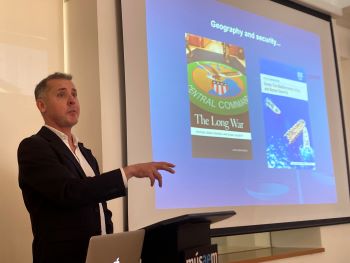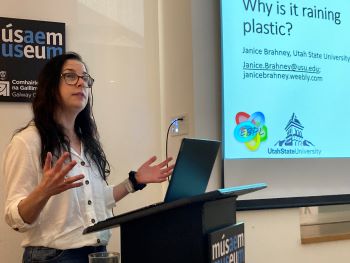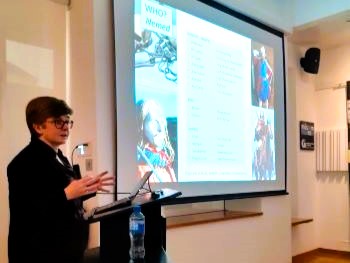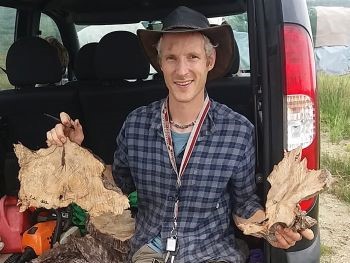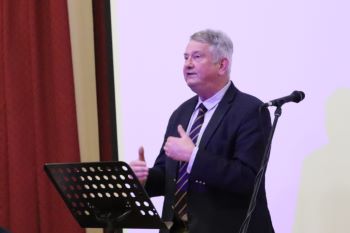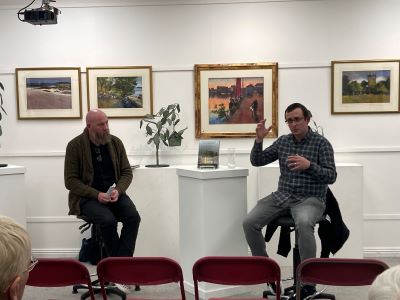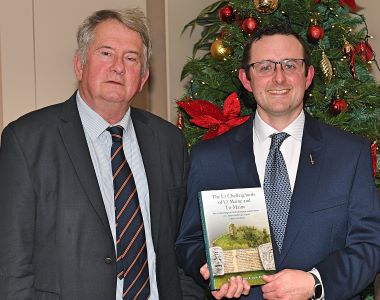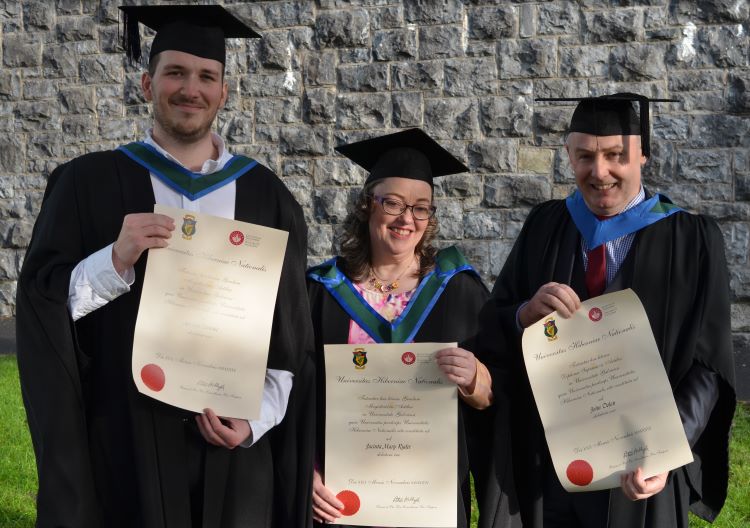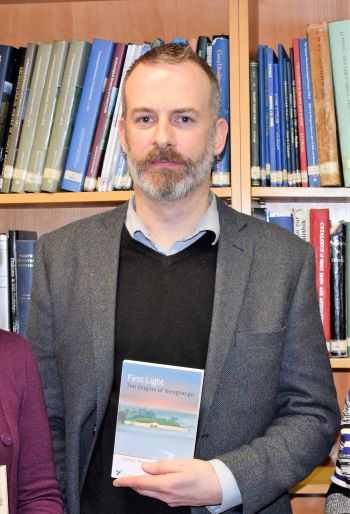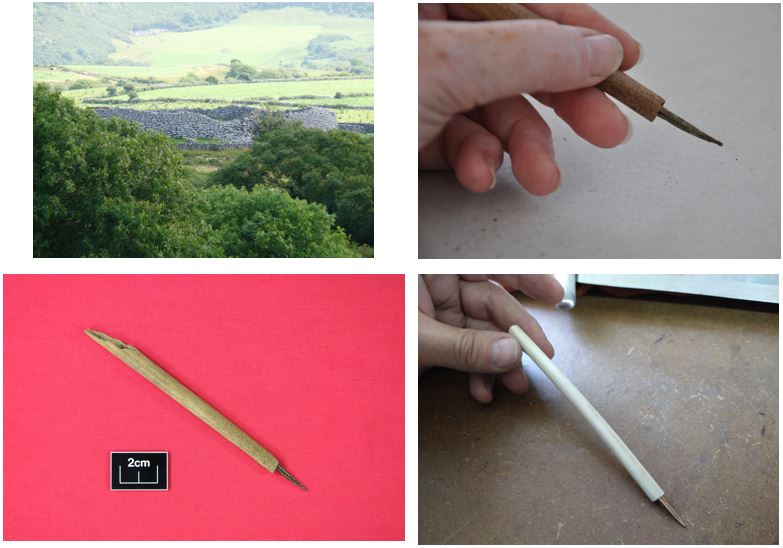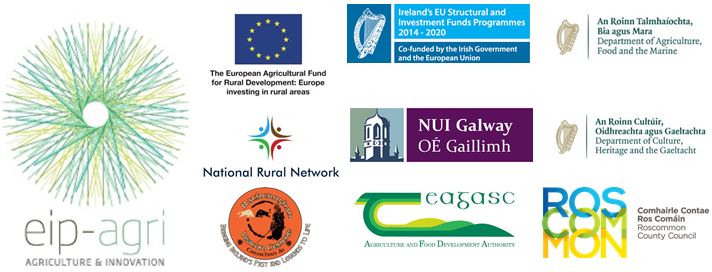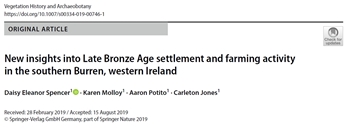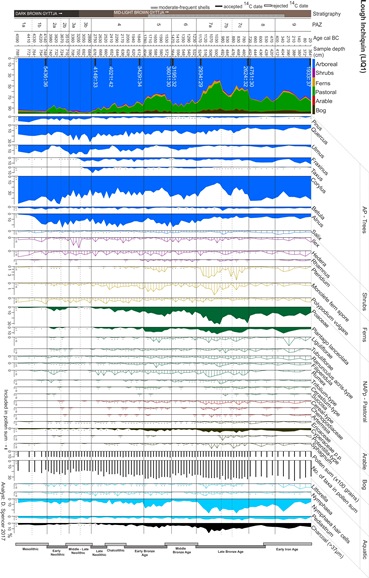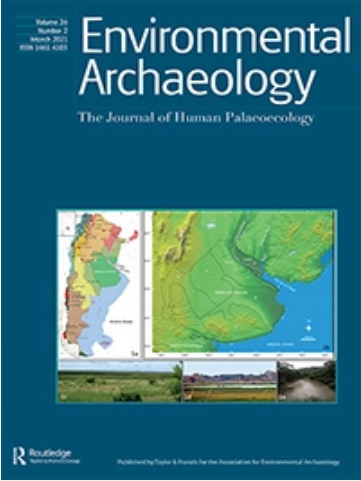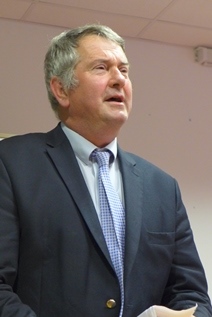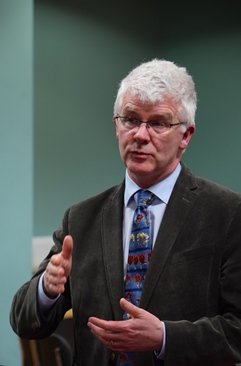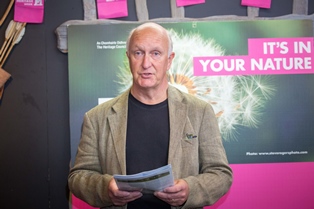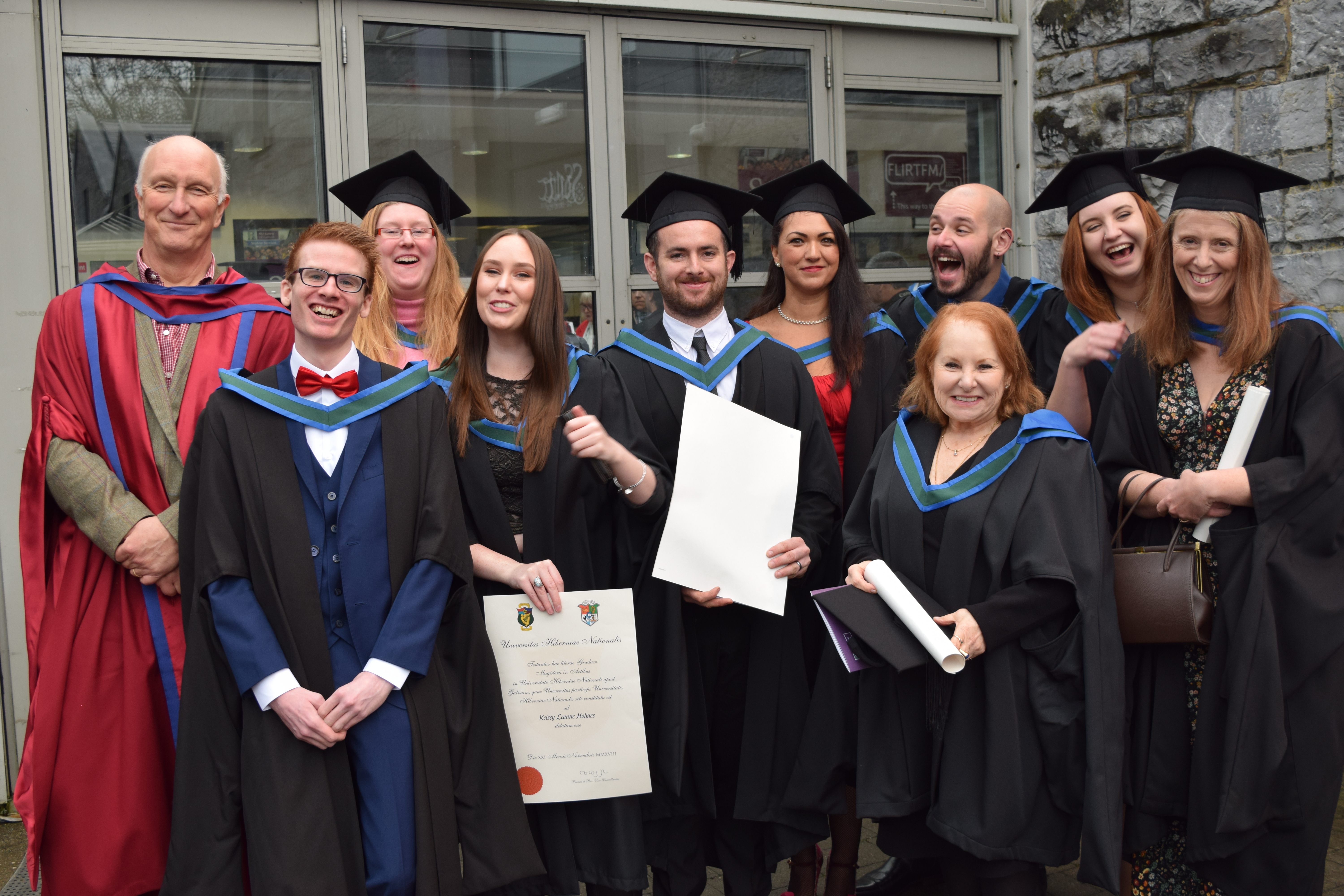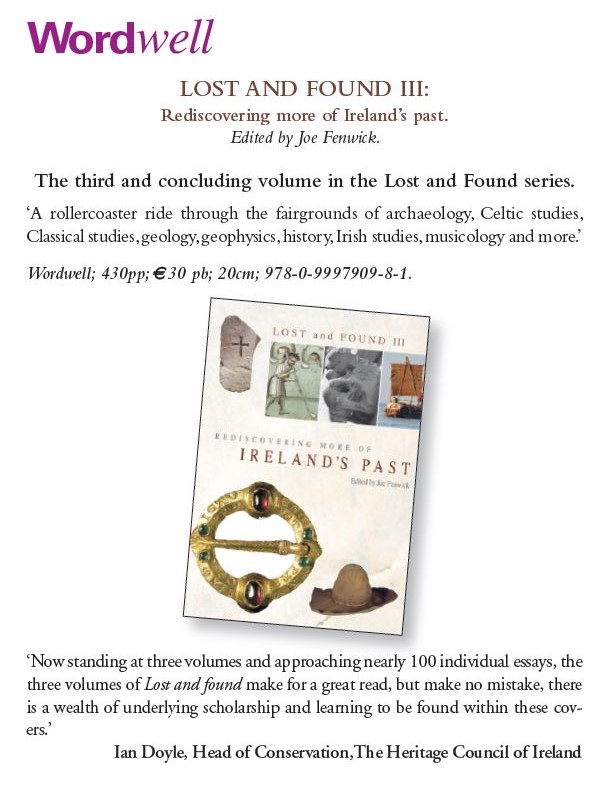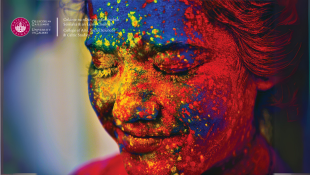-
Courses

Courses
Choosing a course is one of the most important decisions you'll ever make! View our courses and see what our students and lecturers have to say about the courses you are interested in at the links below.
-
University Life

University Life
Each year more than 4,000 choose University of Galway as their University of choice. Find out what life at University of Galway is all about here.
-
About University of Galway

About University of Galway
Since 1845, University of Galway has been sharing the highest quality teaching and research with Ireland and the world. Find out what makes our University so special – from our distinguished history to the latest news and campus developments.
-
Colleges & Schools

Colleges & Schools
University of Galway has earned international recognition as a research-led university with a commitment to top quality teaching across a range of key areas of expertise.
-
Research & Innovation

Research & Innovation
University of Galway’s vibrant research community take on some of the most pressing challenges of our times.
-
Business & Industry

Guiding Breakthrough Research at University of Galway
We explore and facilitate commercial opportunities for the research community at University of Galway, as well as facilitating industry partnership.
-
Alumni & Friends

Alumni & Friends
There are 128,000 University of Galway alumni worldwide. Stay connected to your alumni community! Join our social networks and update your details online.
-
Community Engagement

Community Engagement
At University of Galway, we believe that the best learning takes place when you apply what you learn in a real world context. That's why many of our courses include work placements or community projects.
News
Farming Rathcroghan wins two Archaeological Achievement Awards, 2025
Our heartfelt congratulations to our partners in Farming Rathcroghan on their recent successes in the Archaeological Achievement Awards (Britain and Ireland), 2025. Not only did it win the 'Archaeology and Sustainability' award, but also the 'Outstanding Achievement' award.
We in the Discipline of Archaeology are very much proud to be part of it. Well done all! Wonderful news!
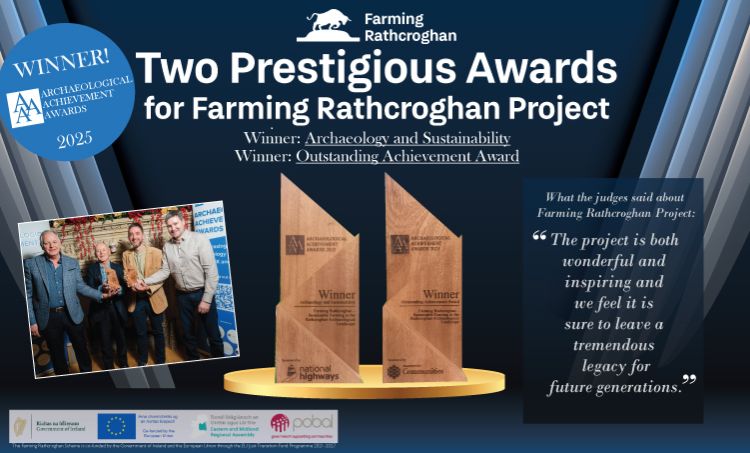
“These awards are a testament to the dedication of our farmers, stakeholders, operation group members, community partners, and the entire team who work tirelessly to protect this archaeologically rich landscape, while ensuring it remains a living, working environment. We are also grateful for the ongoing support, advice and collaboration of our partners in the Rathcroghan Visitor Centre, Discipline of Archaeology (University of Galway), National Monuments Service (Department of Housing, Local Government and Heritage), Office of Public Works, Roscommon County Council, Royal Sites of Ireland and Teagasc," Richie Farrell, Project Manager, Farming Rathcroghan.
3-D Scanning Archaeological Artefacts in collaboration with MakerSpace, Hardiman Library
Archaeology is working in collaboration with Eileen Kennedy (Library Digital Experience Developer), MakerSpace, Hardiman Library, to train students throughout the University in 3-D scanning techniques and the production of computer-generated 3-D models with a view to printing 3-D facsimile reproductions of artefacts for teaching purposes.
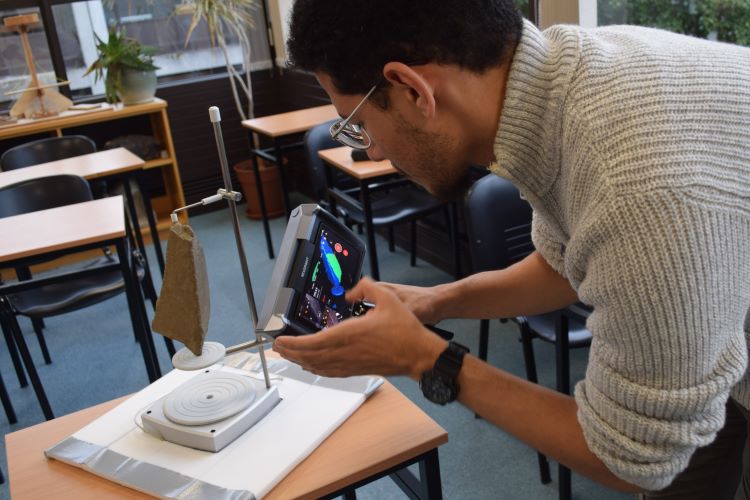
Here, Yousef Konswah is scanning part of an Ogham inscription carved onto the edge of a sandstone using a Revopoint 3-D scanner. This ogham stone was unearthed during the archaeological excavations or Raffin Fort, near Nobber in Co. Meath. It has yet to be analysed and translated, but it is likely to date to between the 5th and 7th centuries AD.
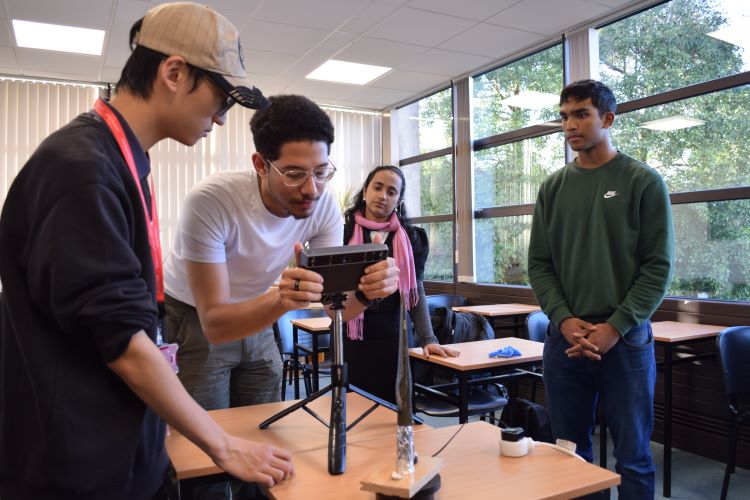
In this instance, Yousef and Liu Xiao Yu are scanning a Late Bronze Age spearhead, with Merina Thomas and Shan Nanayakkara observing.
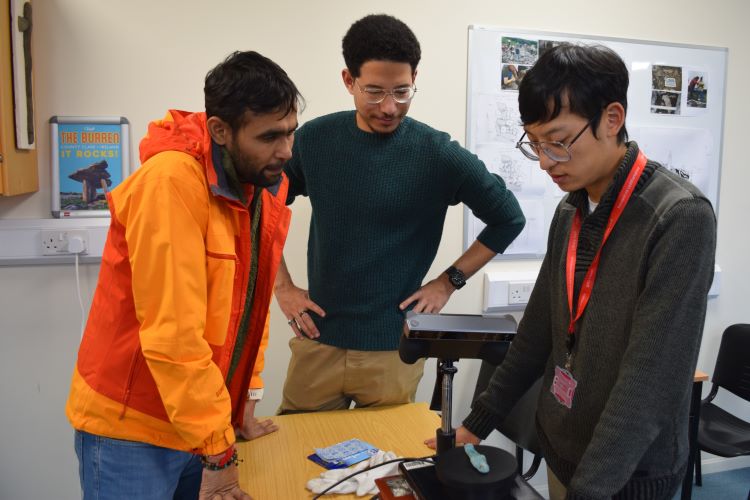
Kamal Rustagi, Yousef Konswah and Liu Xiau Yu scanning an ancient Egyptian ushabti.
Pluriverse Knowledge and Climate Justice podcast
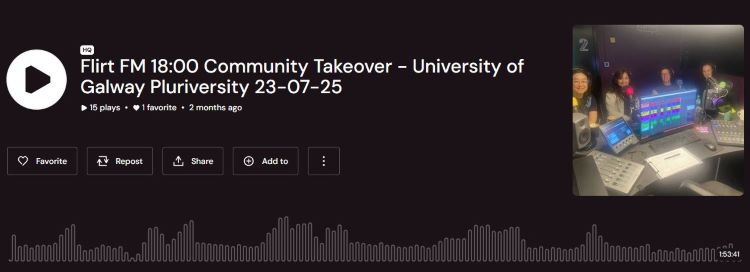
Anouska Timari, PhD candidate, Archaeology, recently contributed to a Flirt FM/Clare FM radio programme on the topic of pluriverse knowledge and climate justice. Listen to the podcast by clicking on the link below.
Rathgurreen excavation makes news headlines.
Dr Michelle Comber’s archaeological excavation at Rathgurreen ringfort on the Maree Peninsula, Co. Galway, featured on RTE1’s ‘Morning Ireland’ (https://www.rte.ie/radio/radio1/clips/22532117/) on Monday, 21 July, and it also made the newsprint of the Irish Times (https://focus.ruepointmedia.ie/image/59510033/1/University%20of%20Galway), the Irish Independent (https://focus.ruepointmedia.ie/image/59509694/1/University%20of%20Galway), the Irish Daily Star (https://focus.ruepointmedia.ie/image/59510709/1/University%20of%20Galway), and the Connacht Tribune (https://connachttribune.ie/excavation-reveals-maree-ringfort-was-home-to-ancient-nobles/) and Horticulture Connected (https://horticultureconnected.ie/featured/archaeologists-reveal-ancient-nobles-ringfort/).
Michelle’s Rathgurreen excavation also features online in The Journal.ie (Irish archeologists reveal an ancient nobles' ringfort from Early Medieval period in Galway) and BreakingNews.ie (https://www.breakingnews.ie/ireland/ancient-nobles-ringfort-revealed-by-archaeologists-1784994.html).
Michelle was also a guest on Newstalk’s, Sean Moncrieff Show (New ringfort excavation tells more about ancient Irish society | Newstalk), ‘Galway Talks’ on Galway Bay FM’s and Connemara Community Radio.
-750x500.jpg) |
|---|
|
Archaeologists Dr Michelle Comber, University of Galway (right of picture), and Susan Curran, Discovery Programme: Centre for Archaeology and Innovation Ireland, discussing the details of an excavated feature at Rathgurreen ringfort (Photograph: Aengus McMahon/University of Galway/PA). |
Panoramic settlement overlooking Galway Bay unearths Western Ireland’s place in the wider world - past and present
Archaeologists have confirmed a ringfort overlooking Galway Bay as a settlement for rulers and nobles in Ireland’s Early Medieval period, a site with a remarkable ancient history.
Rathgurreen Ringfort, in the Maree area of Co Galway, has been described as an impressive “high-status” settlement that could date anywhere from the 5th to 12th century AD.
An eight-week archaeological excavation, directed by Dr Michelle Comber and Dr Noel McCarthy of the Discipline of Archaeology at University of Galway, has also revealed exciting new layers to the story of this panoramic site with views south to the Burren, west to the Atlantic, and north across Galway.
The ringfort was first investigated and proposed as a high-status settlement - home to a local ruler such as a king or lord - by Professor Michael Duignan, then Chair of Archaeology at the University, in the late 1940s.
Excavations now suggest that parts of the site are potentially 1,000 years older than previously thought, with evidence of contact with Rome, Scotland, France, and Scandinavia, possibly including the trade of valuable purple dye made at Rathgurreen.
A team of professionals, students and volunteers took part in the archaeological dig this summer on a section of the 100m-diameter ringfort.
Dr Comber, lecturer in Archaeology at University of Galway, said: “What we can say with some certainty is that Maree is an ancient territory. There are up to 40 ringforts in the area, most of which are only a third the size of Rathgurreen, not to mention a number of earlier prehistoric sites. The name Mearaí (Maree) appears in several early legends, often associated with warriors or other figures bearing that name. Our research confirms that Rathgurreen was the home of a noble family - hence the description as high-status.
“But the story is much deeper and richer. We have evidence of continuity and change at this site – a settlement that possibly dates back to the Iron Age, that was later developed into a very fine ringfort. A new home with links to ancestors would certainly have been very attractive to Early Medieval nobility.”
The archaeology team found a number of glass beads, some coloured blue and another turquoise and red. These have parallels in other parts of Ireland and Scotland in the Iron Age - the era that immediately precedes the Early Medieval period.
The dig has also confirmed the presence of Early Medieval pottery from northern France and amber beads likely connected with Scandinavian trade routes used by the Vikings.
Evidence of the manufacture of purple dye at Rathgurreen comprises the remnants of dog-whelk shellfish that were processed at the settlement to produce the rare, and therefore, valuable colouring.
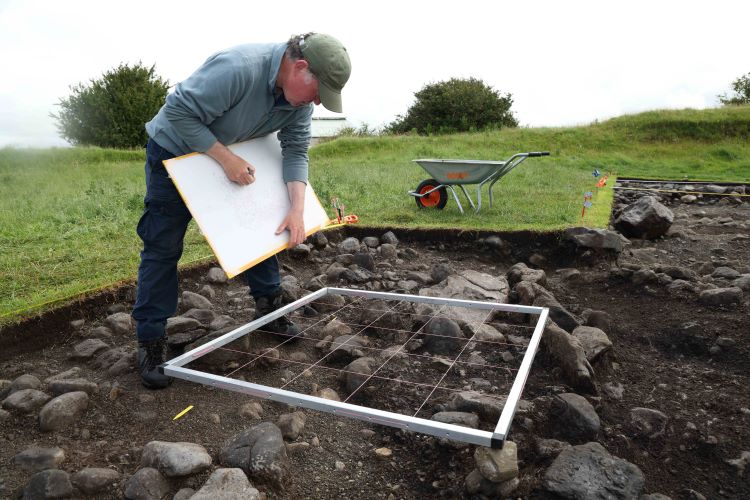 |
|---|
| Archaeologist, Dr Noel McCarthy, University of Galway, drawing an archaeological feature during the course of excavations at Rathgurreen ringfort, July 2025. |
Dr Comber added: “We are working in an ancient high-status settlement located roughly mid-way along the Atlantic seaboard. In no sense, though, would it have been viewed as ‘wild’ or isolated - on the contrary it was part of a wider community and had links with other parts of Ireland, Scotland and mainland Europe. The adjacent coast provided relatively easy access to the outside world - seaways were the motorways of their day.
“The big takeaway from this site is that a place like Galway had a wider significance in the past, and that significance translates into the present. This one site has many tales to tell, and roles to play. People come to the west of Ireland and they think it’s isolated and remote, but Maree’s ancient remains tell us that western Ireland was not cut off from the wider world, geographically or culturally.”
The modern excavations began with geophysical surveys that provided hints of what might be present beneath the grass. In conjunction with the results from the 1940s, these helped guide the work this summer.
The excavation marks the launch of a new research project exploring land use through time on the Maree peninsula in Galway with the University team hoping to continue digs at the site in 2026 and to pursue other locations in the area in future years.
The larger project is partnering with the Discovery Programme: Centre for Archaeology and Innovation Ireland. It also involves local, national and international communities - developing a Conservation Management Plan for Rathgurreen, in conjunction with landowners, ecological and archaeological experts and funded by the National Monuments Service Community Monuments Fund via Galway County Council.
Community volunteers, University of Galway archaeology students, and international students from Uppsala University in Sweden (a partner of University of Galway in the ENLIGHT European University Alliance) came together this summer to investigate this site, contribute to a new research project, and gain skills vital to pursuing in-demand careers in the archaeological profession.
Dr Chelsea Ryan, our latest PhD graduate
We are particularly proud of Dr Chelsea Ryan, who graduated with a PhD on 12 June, 2025. Her thesis, supervised by Dr Stefan Bergh, was entitled "Conveying identity through place: understanding Bronze Age people via nucleated settlements". Many congratulations!
 Dr Chelsea Ryan on the occasion of her graduation, pictured here with Dr Carleton Jones and Dr Kieran O'Conor, Discipline of Archaeology.
Dr Chelsea Ryan on the occasion of her graduation, pictured here with Dr Carleton Jones and Dr Kieran O'Conor, Discipline of Archaeology.
Rathcroghan: one of 'Ireland's Greenest Places'
“At a time of accelerated climate disruption and nature loss, the Irish Times competition aims to get behind the greenwashing and find locations in Ireland where true sustainability is being pursued successfully” Kevin O’Sullivan.
Joe Fenwick, Senior Technical Officer, Archaeology, nominated Rathcroghan under the ‘community’ category. His 300-word submission was liberally quoted in the Irish Times Weekend supplement on Saturday, June 14, 2025. We will keep our fingers crossed that Rathcroghan will be shortlisted amongst the finalists.
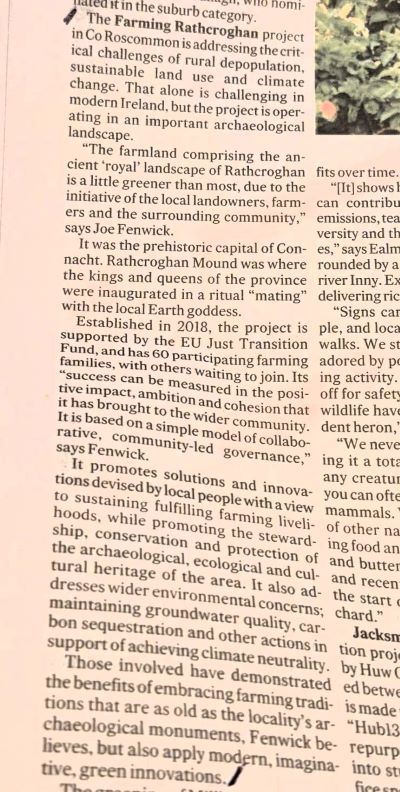
A QS Subject Ranking to Celebrate!
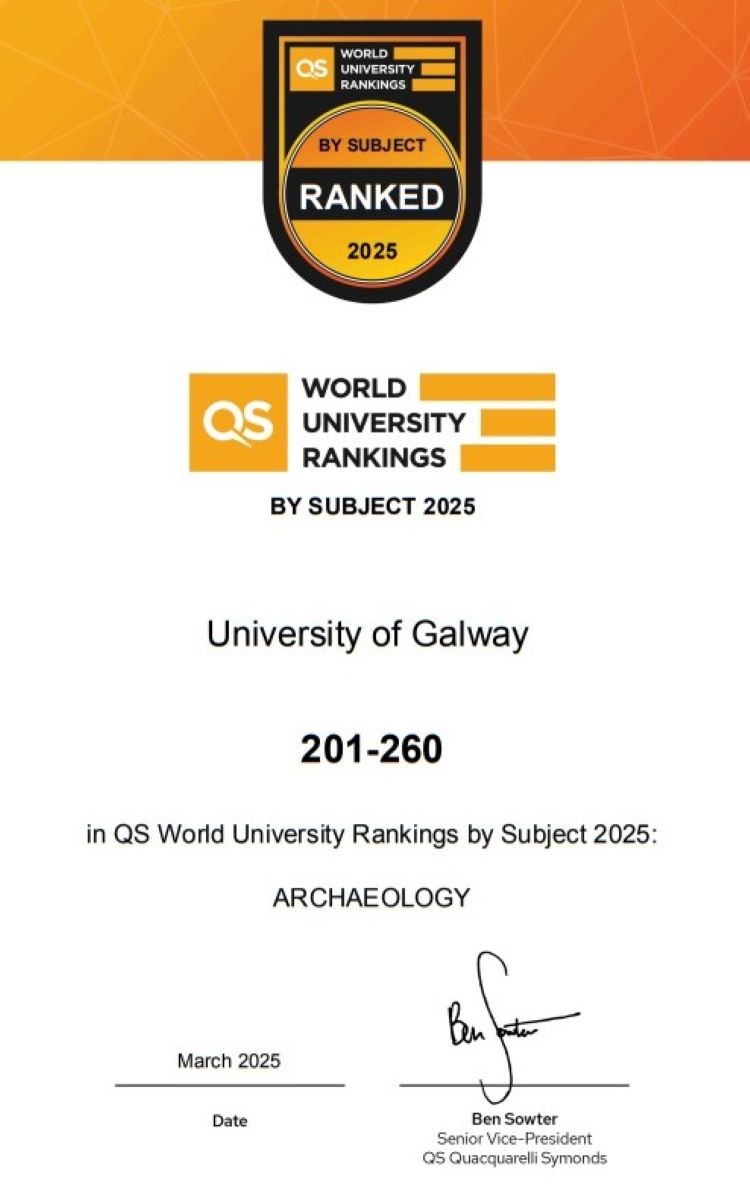
Rathgurreen Archaeological Excavations Underway
Dr Michelle Comber's archaeological excavations at Rathgurreen ringfort, Maree Peninsula, Co. Galway, got underway on Monday, 2nd June, and will run until the end of July 2025. This is part of an ENLIGHT International Training Excavation Module (See our Research and Social Media for more details and updates as they happen).
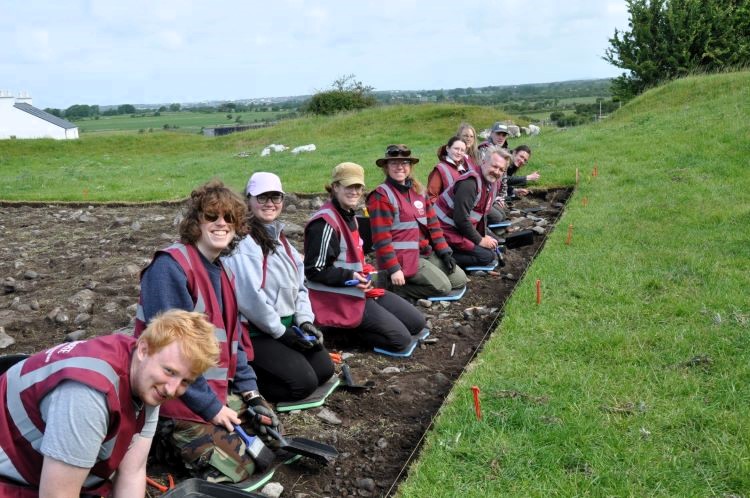
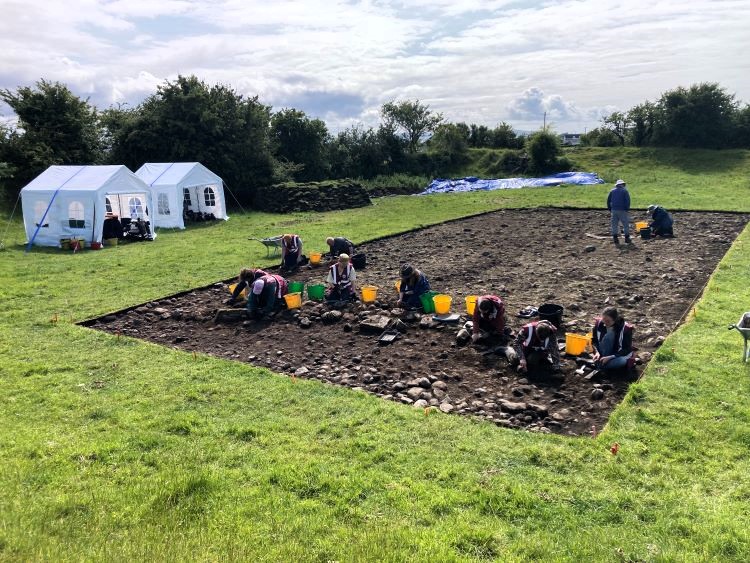
Newgrange in the News
Joe Fenwick, our Archaeological Field Officer, has been the focus of some media attention recently, with his thoughts on the megalithic art of Newgrange, part of his ongoing research of Brú na Bóinne.
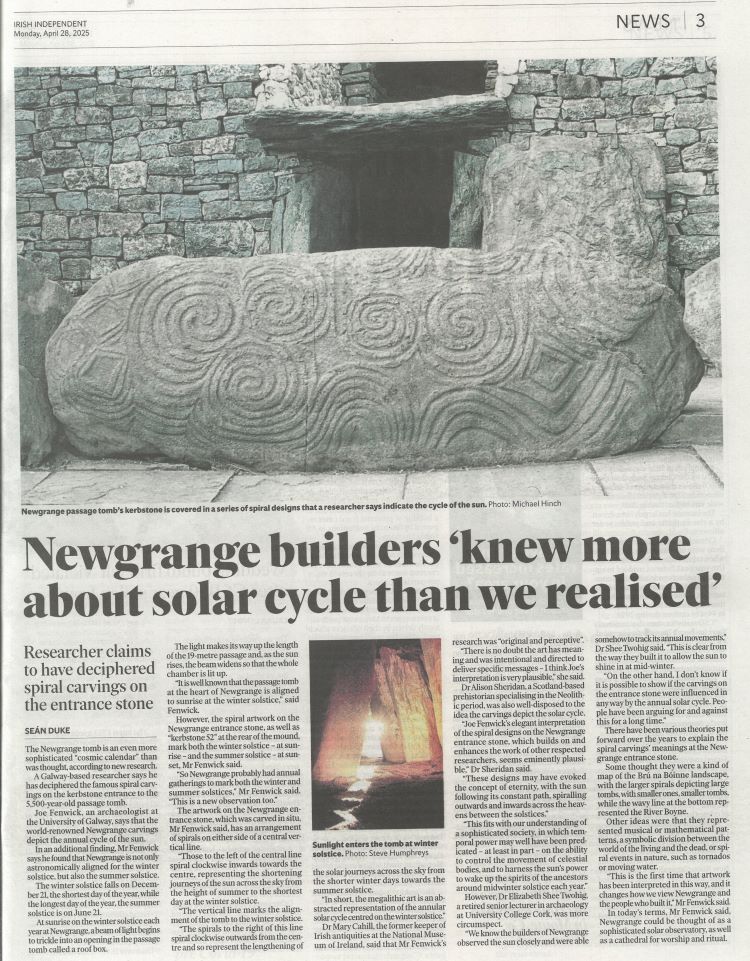 |
|---|
| Irish Independent article by Sean Dean, Science Journalist, Monday, 28 April, 2025. |
You can read more about this, and the wider context of this research in a paper entitled 'Unravelling the spiral: an exploration of passage tomb alignment, related kerbstone art and cycles of monumental construction at Brú na Bóinne'. This was recently published in a festschrift, People, Prehistory, and the Past, in honour of John Waddell, Emeretus Professor of Archaeology, University of Galway (Four Courts Press, 2025).
Joe also has a second, follow-up article in the most recent edition of Ríocht na Midhe, the journal of the Meath Archaeological and Historical Society (2025, Vol. 36) entitled ‘Cycles of the cosmos inscribed in the great passage tombs of Bru na Boinne: a calendrical framework for regional gatherings, religious festivals and monumental construction’.
Radio Show links:
Interview on RTE Radio 1, Ray D'Arcy show, Monday, 28 April, 2025 (25 minutes in):
https://www.rte.ie/.../1509937-the-ray-darcy-show-monday.../
Interview on Newstalk, Sean Moncrieff show, Tuesday, 29 April, 2025:
https://link.goloudplayer.com/s/pGExZcwvuRwI
Anouska Timali awarded best first-Year Phd presentation
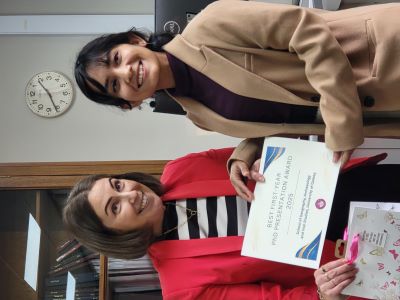 |
Dr Therese Conway (left) presenting Anouska Timali, Archaeology, with the 'Best First-Year PhD Presentation' award at the School of Geography, Archaeology & Irish Studies postgraduate presentation day on Wednesday, 23 April, 2025. Many congratulations Anouska! |
|---|
People, Prehistory and the Past: essays in honour of John Waddell
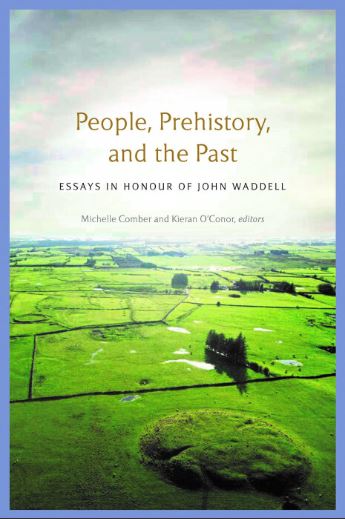 |
Edited by
It will be available |
|---|
Dedicated to John Waddell, Emeritus Professor of Archaeology at the University of Galway, an internationally renowned and popular scholar whose long career and research changed the direction of prehistoric studies in Ireland, this collection of essays, authored by a number of his colleagues, continues John’s work by examining aspects of Irish prehistory and the interaction of people with the past.
Contents include: Stefan Bergh and Robert Hensey (UG), Capstones and potential capstones at the Carrowmore megalithic complex; Mary Cahill (NMI), Going to sea in a lunula; Michelle Comber and Noel McCarthy (UG), From prehistory to medieval: living among the ancestors in the Burren, Co. Clare; Daniel Curley (Rathcroghan Visitor Centre), Evidence for the heroic narratives as seen in Machaire Connacht; Joseph Fenwick (UG), An exploration of passage tomb alignment, related kerbstone art and cycles of monumental construction at Brú na Bóinne; Carleton Jones (UG), Identity in Early Bronze Age western Ireland – a study of pottery and landscape; Conor Newman (UG), A contribution to the debate concerning archaeology and early vernacular literature; Máirín Ní Dhonnchadha (UG), The Mac Diarmada inauguration site at Croghan (Cruachán), County Roscommon; William O’Brien (UCC), Ogham stones, souterrains and ancestral memory in Early Medieval Ireland; Kieran O’Conor (UG), Lady Dorothy Lowry-Corry (1885–1967).
Spring Lunchtime Lecture Series 2025
|
|
Professor John Morrissey, Discipline of Geography, School of Geography, Archaeology & Irish Studies. Thursday, 27 February Lecture title: Judith Wright as Environmental Visionary: The Unseen Writings of Australia’s Most Beloved Poet |
|
|
Dr Janice Brahney, Associate Professor at Utah State University, USA.
Thursday, 6 March Lecture title: Why is it Raining Plastic? |
|
|
Dr Molly-Claire Gillett, SSHRCC Postdoctoral Fellow, Centre for Irish Studies, University of Galway/Trent University Centre for Aging and Society, Canada.
Thursday, 13 March Lecture title: Crafting place and community: the Irish Countrywomen's Association and Federated Women's Institutes of Ontario |
|
|
Dr Méabh Ní Fhuartháin, Centre for Irish Studies. Thursday, 20 March Lecture title: Heading to the Fleadh: Irish Traditional Music Festivalisation in the 1950s |
|
|
Dr Michelle Comber, Discipline of Archaeology, School of Geography, Archaeology and Irish Studies. Thursday, 27 March. Lecture title: The Galway and Ardrahan Brooches - and their world... |
|
|
Dr Gordon Bromley, Discipline of Geography, School of Geography, Archaeology & Irish Studies. Thursday, 3 April Lecture title: Swiss cheese in a dust bowl: Reconstructing the demise of the Ice Age in the Burren |
|
|
Dr Kieran O’Conor, Discipline of Archaeology, School of Geography, Archaeology & Irish Studies. Thursday, 10 April Lady Dorothy Lowry-Corry (1885-1967) - 'An indefatigable field-worker’ |
'Sligo History and Society' book-launch
Congratulations to William Nolan and Dr Kieran O’Conor (Discipline of Archaeology), editors of the of the most recent volume in the History and Society series, which features Co. Sligo.

The book was launched in Sligo City Hall on Wednesday, 17 December, 2024.

Siobhan Ryan, Heritage Officer, Sligo County Council, was the master of ceremonies for the evening, with Declan Bree, Cathaoirleach, Sligo County Council, officially launching the book. Martin Lydon, CEO, Sligo County Council spoke too. Fiona Gallagher, Dublin City University, reviewed the main findings of her paper and Martin Timoney spoke about his. Dr Kieran O’Conor thanked everyone who contributed to the book and brought it to publication and also all those who so generously supported the undertaking.

Sligo History and Society book-launch Press Release and Photos
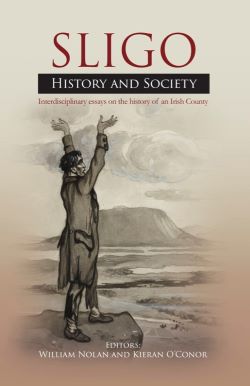 |
Nolan, W. & O’Conor K. (eds) 2024 |
|---|
Launching the new Archaeological Post-Excavation module
AMS staff recently partnered with Archaeology at the University of Galway to deliver guest lectures in Michelle Comber's new Archaeological Post-Excavation module for final-year Archaeology students. This lecture series has proven hugely popular, with lectures including Human Skeletal Remains by Dr Mara Tesorieri (AMS Osteoarchaeologist), Archaeobotany by Dr Kevin Kearney (AMS Environmental Specialist), and Elaine Lynch (AMS Ceramics Specialist, shown here) with a hands-on session featuring pottery and clay tobacco pipes.
More dates in the series are planned, with Joanne Hughes visiting to discuss Environmental Impact Assessments and Dr Dan Atkinson to present on Marine Archaeology in the New Year. Both AMS and the University of Galway hope to continue this partnership, highlighting the research potential and career opportunities that exist for archaeology graduates.
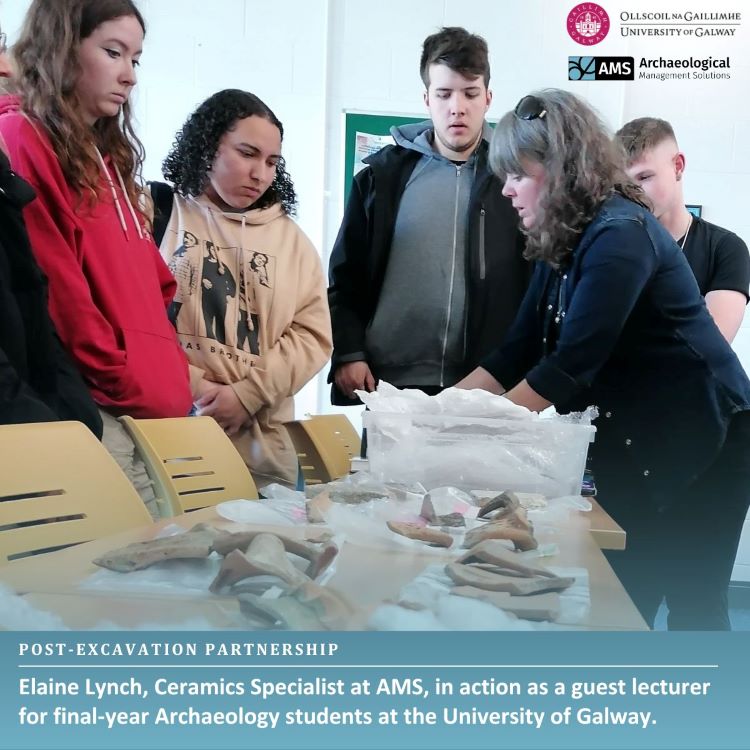 |
|---|
|
In photo: Ciara Maguire (in red), Angelina Otero, Jack Lindey, and Robert Russell (behind Elaine). Photo by Rachel Langan. |
Uí Chellaig lords of Uí Maine: book-launch
|
Dr Kenneth Coyne interviewing Dr Daniel Curley on the subject of his book |
Dr Kieran O'Conor and Dr Daniel Curley at the book-launch in Ballinasloe |
|---|
Dr Daniel Curley was interviewed by Dr Kenneth Coyne at Kenny’s bookshop and art gallery (21 November 2024), to mark the publication of his book The Uí Chellaig lords of Uí Maine and Tír Maine - An archaeological and landscape exploration of a later medieval inland Gaelic lordship.
The book was formally launched by Dr Kieran O’Conor at Gullane's hotel, Ballinasloe, on Tuesday 26th November - an evening enjoyed by all who attended.
Dr Curley, graduated with a PhD in Archaeology, University of Galway, under the supervision of Dr Kieran O’Conor in 2022, which formed the basis his book.
It can be purchased from: Four Courts Press | The Uí Chellaig lords of Uí Maine and Tír Maine.
Worldviews in Climate Change
Congratulations to Anouska Timali (PhD candidate, Archaeology) on the publication of:
Tamuli, A. 1994 Traditional Ecological Knowledge, Ecocentrism and Climate Resilience: A Reflection on the Significance of Worldviews in Climate Change. Journal of the Indian Anthropological Society 59 (3), 222-239.
Link to abstract: https://www.indiananthropologicalsociety.org/current-volumes/
Graduations - November 2024
Congratulations to archaeologists Andrew Downie MA, Jacinta Ryder MA and John Dolan HDip on their recent graduations. Well done all!
Rathcroghan Archaeological Research Showcased in IRRP 2024
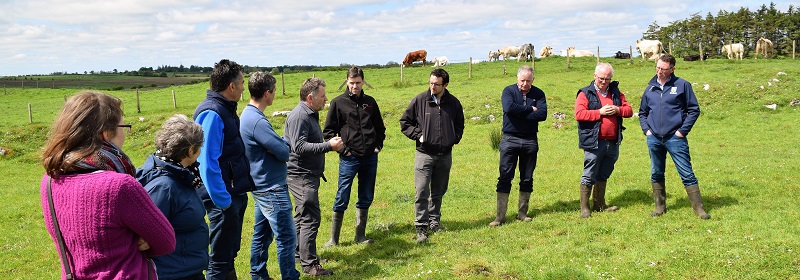
Rathcroghan features as a case-study in the University of Galway's Institutional Review of Research Performance (IRRP 2024). Reaping the rewards of living and farming at Rathcroghan, a culturally sensitive landscape in County Roscommon showcases the value of our archaeological research at the Late Prehistoric ‘royal’ site and surrounding ritual landscape of Ráth Crúachan and details the significant positive impact and societal benefits that it has brought to the region. This is one of a number of selected case-studies that demonstrate how active University of Galway research has been playing its part to change the world for the better.
UNICEF fundraiser for Palestine & Lebanon
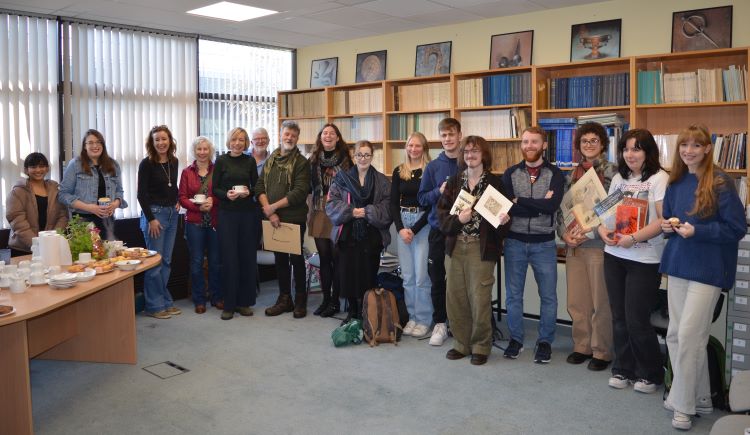
The fundraising book-sale and coffee morning in the Discipline of Archaeology on Wednesday, 6 November, raised over €1200 for UNICEF towards the purchase of humanitarian aid for Palestine and the Lebanon. Many thanks to everyone who contributed books, home baking and generous donations towards this very worthy cause.
In the Footsteps of Columbanus: Insular Reliquaries in Medieval Italy
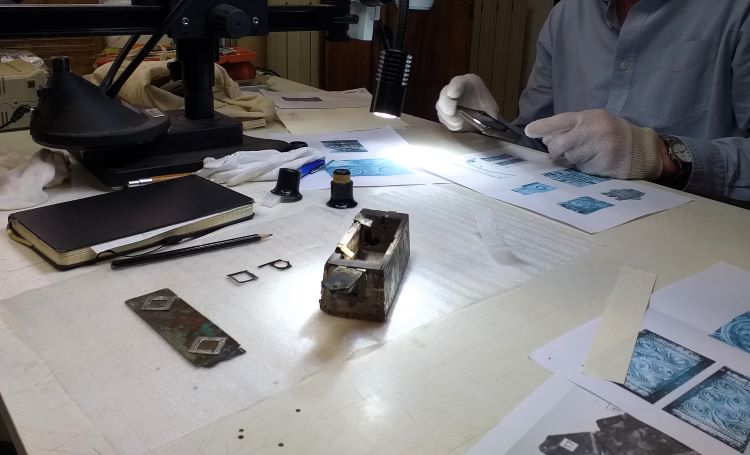
A legacy project of the successful Making Europe: Columbanus and His Legacy Project (2010-2015), the impetus behind this collaboration is the recent discovery of an Insular reliquary at a medieval church not far from Bobbio. This is an important addition to the small but important corpus of such reliquaries in Italy, which includes ones at Bobbio (abbazia di San Colombano); Bologna (Museo Civico Medievale); Nonantola (abbazia di San Silvestro); Abbazia di San Salvatore al Monte Amiata; and a lost fragment from Rome (Königliches Antiquarium-Berlin). These objects raise questions around international connections and changing contexts. Carried from an Insular World, with its own traditions and practices, and transitioning to and through new cultural contexts, these objects underwent significant transformations in role and agency, and possibly even in assembly and repair.
In this project we are working with and indebted to various institutions:
- University of Galway
- Università degli Studi del Piemonte Orientale
- Università di Bologna
- Consiglio Nazionale delle Ricerche (Italy)
- Soprintendenza Archeologia, Belle Arte e Passagio, Milano
- National Museum of Ireland
Newly published monograph by Dr Daniel Curley
Dr Daniel Curley, graduated with a PhD from the Discipline of Archaeology, University of Galway, in 2022. The title of his thesis was A multi-disciplinary study of lordly centres in the later medieval Uí Chellaig lordship of Uí Maine, c. 1100-1600 AD. This research has formed the basis of a monograph entitled ‘The Uí Chellaig lords of Uí Maine and Tír Maine: An archaeological and landscape exploration of a later medieval inland Gaelic lordship’, which has just been published by Four Courts Press (2024).
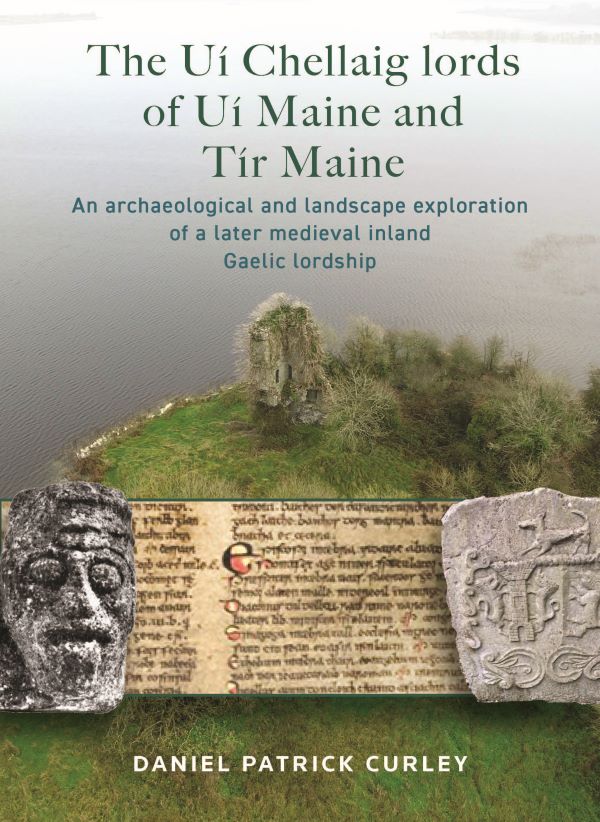
This handsome hardback book, 320 pages with full colour illustrations, deals with the historical background to the later medieval Uí Chellaig (O’Kelly) lords of eastern Connacht, from c.1100 up until the end of the 16th century.
The Ó Cellaig (O’Kelly) lordship of Uí Maine and Tír Maine was a substantial political territory and influential cultural power in later medieval Connacht. The book identifies and reconstructs the physical appearance of the major Ó Cellaig lordly centres from their emergence as one of the principal offshoots of the Uí Maine in c.1100, to the demise of the lordship around the year 1600. It begins with an historical background, which helps to identify the lordly centres (cenn áiteanna), and define the shifting physical boundaries of this territory through the period. The later medieval physical environment is then reconstructed, with an exploration of the resources and economic conditions which underpinned this inland Gaelic lordship. Thereafter, the focus moves to inspect these cenn áiteanna, their siting, forms and surrounding cultural landscapes. In doing so, the writer investigates a broad range of settlement forms, including the continued use of crannóga and promontory forts, before turning to the tower house castle. This book tackles important themes in later medieval Gaelic society and its physical expression, through the lens of these eastern Connacht lords.
Now available through Four Courts Press (€45)
Celebrating a Centenary of Archaeology in Galway
 Dr Patrick F. Wallace delivering his lecture on 'UCG and the excavation of Viking Dublin' in St Nicholas' Collegiate Church on Monday, 16 September, 2024.
Dr Patrick F. Wallace delivering his lecture on 'UCG and the excavation of Viking Dublin' in St Nicholas' Collegiate Church on Monday, 16 September, 2024.

Dr Patrick Gleeson, Queen's University Belfast, spoke on the subject of 'Religion and belief in early Ireland: Later Prehistoric ritual and cult at Ireland's royal landscapes in context' on Monday evening, 23 September.
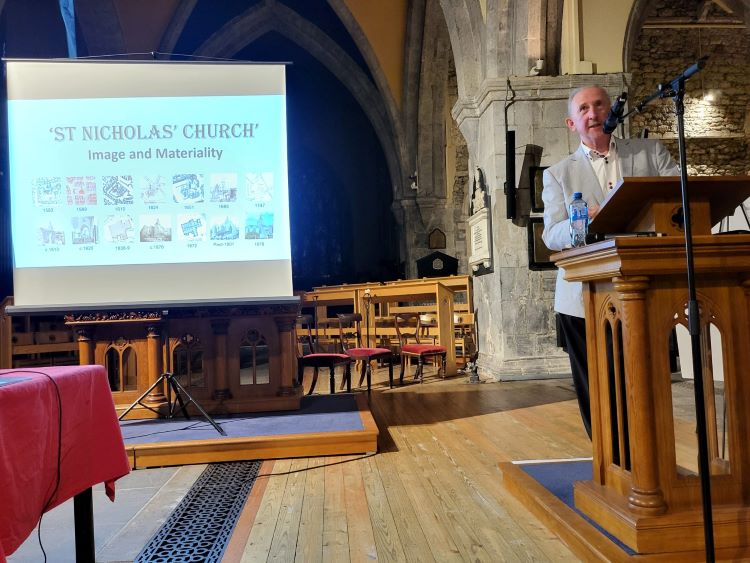
Mr Paul Walsh presented a talk entitled ‘St Nicholas’ Church: image and materiality’, on Monday, 30 September, 2024, the very place in which he was delivering it!

Dr Michelle Comber, spoke on the subject of ‘Connecting the centuries: Rathgurreen ringfort, Co. Galway, and the Maree Project’ on Monday, 7 October. This was a particularly fitting conclusion to the ‘Archaeology 100’ lecture series, as it detailed plans for a renewed collaborative programme of landscape studies, research and excavation on the Maree peninsula; part of a field-school that will be integrated with a number of our undergraduate teaching modules. This initiative is an investment in the future and has enormous potential for the training and education of the next generation of skilled professional archaeologists – much in demand in the current job market!
Brendan Winters' 'love for archaeology' (Irish Independent, 29 August 2024)

Brendan Winters, Irish Independent, 29-02-2024
Full-time Archaeologist required for Farming Rathcroghan
Farming Rathcroghan CLG
Archaeologist-Just Transition Fund 2024-2026
Roles, Responsibilities & Duties
TITLE: Community Archaeologist
LOCATION: Cavepark, Glenballythomas, Tulsk, Castlerea, Co. Roscommon.
CONTRACT: Full-time (37.5 hour-week Mon-Fri.). Immediate start, permanent position (pending suitability and probation)
PROJECT DURATION: 1st July 2024-31st March 2026
REMUNERATION: €55,000- €60,000 per annum (dependant on experience).
BACKGROUND: Rathcroghan is a world class archaeological landscape, being one of the best-preserved Royal landscapes in Ireland. The site is currently part of a serial nomination for inscription to the UNESCO World Heritage Site (WHS) list, under the heading ‘Royal Sites of Ireland’.
Following the success of the Farming Rathcroghan EIP 2019-2023, Farming Rathcroghan CLG as a locally led approach is delivering a unique farming, archaeology and cultural heritage project over the next two years under the Just Transition Fund 2024-2026 and now seeks the services of an experienced Archaeologist to be part of an exciting project.
The EU Just Transition Fund allocation to Farming Rathcroghan CLG is a project supporting and training farmers across a 3.5 km square area in Rathcroghan, Co Roscommon, in a number of activities related to farming, archaeology and preserving cultural heritage. The proposed project area is an archaeological landscape with 240 monuments linked to national heritage.
Archaeologist Role:
- Support the delivery of the EU Just Transition Fund/Farming Rathcroghan Project Plan Template and all archaeological activities and actions within the specified project duration
2 Assist with conducting dedicated farm visits in order to identify potential project action opportunities and offer specialist archaeological and heritage advice, specifications and input to bespoke project requirements. This shall include the provision of baseline monument condition and risk assessment and GIS logs/static monitoring points if required.
- Continuation of established good communications with all farming participants established under the Farming Rathcroghan EIP 2019-2023 and the development of bespoke operation manual and guidelines for best archaeological practice, that is ultimately farmer-led.
- Assist and provide input to the administration of the archaeological monument protection legislative framework and liaison with National Monuments Service (including Notification of Works and/or Ministerial Consent) and consultation with any other Stakeholders on Project matters, as required.
- Assist with on-going monitoring, evaluation and review processes, with a view to offering direct advice to farmer participants in the Farming Rathcroghan EU Just Transition Fund project 2024-2026, and to continually improve and expand upon trialling methods and actions. This shall include follow-up farm visits, on-going condition and risk assessment, and scoring inputs therein, where required.
- Provide specialist input and support to farmer training events/presentations and community outreach, as part of the EU Just Transition Fund project training delivery programme and develop promotions and publicity required by the Project.
- Assist in the continued development and trialling of novel innovative project-based equipment, with particular focus on identified priority products as Rathcroghan Gates, Scratching Posts, Resting Frames, Geotextile and Fencing and/or other products.
- Assist with the development of strategic trialling processes, to include protective interventions at archaeological monuments, requiring on-going specialist consultations with National Monuments Service and OPW.
- Conduct a detailed evaluation and assessment of Farm Plan scoring results gathered over the lifetime of the project. Recommendations are to be set out for future best practice and standards for protecting archaeological monuments in an actively farmed landscape.
- Consult and assist directly with the development of bespoke best practice guidance literature with relevant stakeholders concerning farmer-led management and protection of archaeological monuments within an agricultural landscape.
- Provide assistance with project online social media content as a means of facilitating community outreach and creating public awareness of on-going work. Assistance also to include project information and presentations as approved by Farming Rathcroghan CLG.
- Assist and support the Farming Rathcroghan/Project Manager with all other archaeological and heritage-related matters, as required through a proposed agreed schedule of meetings to include Heritage Officer, Roscommon County Council.
- Proven knowledge of archaeological fieldwork processes-on site fieldwork experience would be of benefit. Eligible licenced Archaeologist desired for this position.
- Applicants should also be proficient in Word, Excel, PowerPoint
- Applicants should have a full driving licence.
A full clean driving licence is required as the role necessitates the use of a car to commute to work and for other work-related purposes. The post may also require the candidate to work occasional evenings or weekends (primarily for meetings or information evenings), promotional events, Heritage Week project programming, conferences as required.
Full details of the Farming Rathcroghan/EU Just Transition 2024-2026 project are available from the Project Manager. Richie Farrell. richie@farmingrathcroghan.ie. Information on the Farming Rathcroghan EIP are also available on website. www.farmingrathcroghan.ie
Applications to: Richie Farrell, Project Manager, Farming Rathcroghan, Cavepark, Glenballythomas, Tulsk, Castlerea, Co. Roscommon. F45TE26
Closing date for receipt of applications. Friday 28th June 5.00pm
EU Just Transition Fund awards ‘Farming Rathcroghan’ €886,634
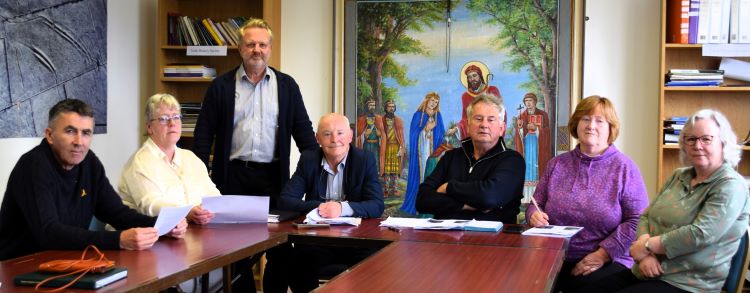 |
|---|
| Farming Rathcroghan Operation Advisory Group Meeting, 3 May 2024 (L-R): Kieran Kenny (Teagasc), Catherine Keena (Teagasc), Joe Fenwick (Archaeology, University of Galway), Richie Farrell (Manager, Farming Rathcroghan EIP-Agri), Dr Kieran O’Conor (Archaeology, University of Galway), Christine Grant (National Monuments Service, Department of Housing, Local Government & Heritage), Nollaig Feeney (Heritage Officer, Roscommon County Council). |
Farming Rathcroghan (currently concluding its 5-year EIP-Agri project, funded through the Department of Agriculture, Food and the Marine) has been awarded a grant of €886,634 under the EU Just Transition Fund as part of two-year cycle of funding which will run until the end of March 2026. The objective of this fund is to enable regions and people to address the social, employment, economic and environmental impacts of the transition towards a climate-neutral economy. In addition to broadening the scope of its objectives, a fully-licenced archaeologist will be employed in a full-time capacity as part of the renewed project.
Archaeology celebrates its centenary (1924-2024) at the University of Galway.
.jpg)
This lavishly illustrated 40-page booklet by Professor John Waddell outlines the history of a particularly dynamic and energetic Archaeological department, the staff members, past and present, who have contributed and continue to contribute to its success, the remarkable breadth and scope of its archaeological research, and its unparalleled publishing record over the years. It remains, to this day, an Archaeological department that continues to perform amongst the top echelon of its archaeological peers on the world stage.
A pdf copy of this publication is available by clicking: Waddell 2024 One Hundred Years of University Archaeology in Galway 1924-2024
Archaeology, University of Galway, among the top 250 of the QS World University Rankings
.png)
ENLIGHT Partnership with Uppsala University
We had the pleasure of showing Dr Carl-Gosta Ojala of Uppsala University, an ENLIGHT partner of the University of Galway, around the impressive ringfort of Rathgurreen in Galway (Thursday, 18 April 2024). Drs Comber and McCarthy plan to start a new research (and teaching) project in south Galway and hope students from Uppsala and other ENLIGHT partner universities will join University of Galway students in the excavation element of the project. Exciting times ahead!
.jpg)
Pictured are Dr Carl-Gosta Ojala, Dr Michelle Comber, Dr Noel McCarthy, and Dr Carleton Jones (photos: Joe Fenwick)
.jpg)
Rathcroghan MA Field-school 2024
.jpg)
The Discipline of Archaeology’s MA in Landscape, Archaeology & Heritage students along with Geography’s MA in Rural Futures Planning & Innovation students spent a particularly productive week exploring Co. Roscommon, as part of a joint Rathcroghan Field-school, conducted between the 8th and 12th of April 2024. It was a busy schedule, involving workshops at Ballinagare and Tulsk National Schools, guided visits to archaeological and heritage sites – including the Later Prehistoric ‘royal’ site of Rathcroghan, Rathra multivallate enclosure, Moygara castle (Co. Sligo), Rathcroghan Visitor Centre and Clonalis House – and attending presentations by Roscommon County Council planning and heritage officers, the Manager of the Rathcroghan Visitor Centre, the Manager of Farming Rathcroghan EIP-Agri Project and conversations with resident farmers and the local community. Altogether, a very constructive, informative and educational week!
.jpg) |
||
|---|---|---|
.jpg) |
.jpg) |
.jpg) |
First Year BA field-class to Rathcroghan
.jpg)
Some of the First Year BA Archaeology students on a field-class to Rathcroghan Mound and Oweynagat (the legendary ‘Cave of the cats’), Co. Roscommon, as part of AR1102 ‘Recording Monuments in the Landscape’ on Saturday, 30 March, 2024.
Minister Malcolm Noonan TD visits Moygara Castle
On a wave of positive publicity following the publication of Moygara Castle, County Sligo and the O’Garas of Coolavin (ed. Kieran O’Conor), the Minister of State for Nature, Heritage and Electoral Reform, Malcolm Noonan TD, paid a visit to the site (Friday, 19 January) to learn more about this impressive castle and to view the conservation works currently underway.

Pictured is Dr Kieran O'Conor explaining the architecture and dating of Moygara Castle to Minister Malcolm Noonan TD and Frank Feighan TD. To their right is PJ O'Neill, the Chairman of the Moygara Castle Research and Conservation Group and the owner of the castle.
European Cultural Heritage Skills, Charter Alliance Project
The Department of Archaeology continues to make an important contribution to safeguarding the future of European cultural heritage. Conor Newman is on the Expert Advisory Board of the Charter Alliance Project – European Cultural Heritage Skills Alliance, an Erasmus+ Blueprint project tasked with developing a 21st-century skills strategy for the sector. The consortium of 47 partners from 16 countries is entering its final year, and has already published a number of important interim statements and findings.
To learn more about European Cultural Heritage Skills Charter Alliance, click HERE to visit their award-winning website.
.
Bernie Broderick fondly remembered
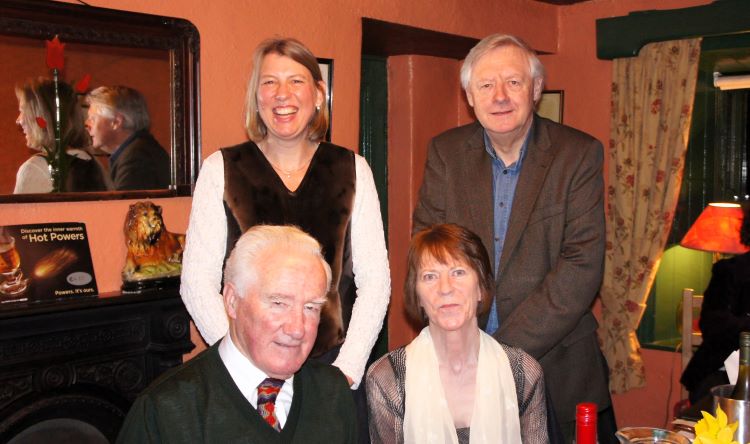
It is with particular sadness that we learned of the death of Bernie Broderick. She served as the Administrative Assistant to four professors of archaeology over her long career at the University of Galway (1975-2012 - when it was known as NUIGalway and before that UCG). Bernie will be long remembered for her wonderful sense of humour, personal warmth and easy-going nature. She will be greatly missed by all her friends and former colleagues in the Department of Archaeology and throughout the university and of course by her family to whom she was particularly close. She is pictured here at her retirement in 2012 with three of our former Chairs of Archaeology, Professor Charlotte Damm, Professor John Waddell and Professor Etienne Rynne. Ar dheis Dé go raibh a anam dílis.
Archaeology MA Graduations - November 2023
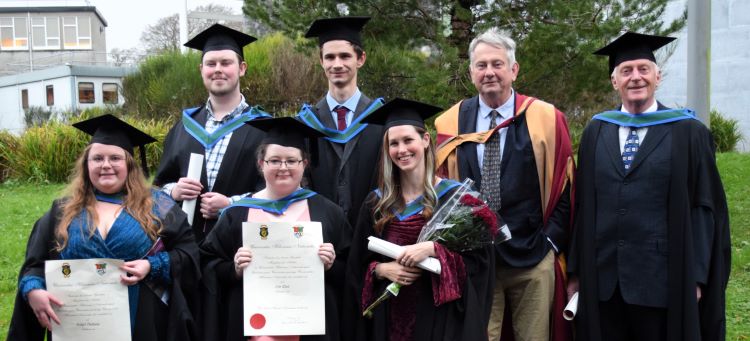
Many congratulations to our recent Archaeology graduates, conferred with various MA degrees on 24 November 2023. Pictured above (L-R): Bridget Dunleavy (MA in Landscape, Archaeology & Heritage), Jack Connelly (MA in Landscape Archaeology), Erin Ward (MA in Landscape Archaeology), Liam Conaghan (MA in Landscape, Archaeology & Heritage), Stephanie Clark (MA in Landscape, Archaeology & Heritage), Dr Kieran O'Conor (Senior Lecturer, Department of Archaeology) and Hugh Gallagher (who completed a research-based archaeologically-themed MA in Medieval Studies).
Two newly published books for your bookshelf.
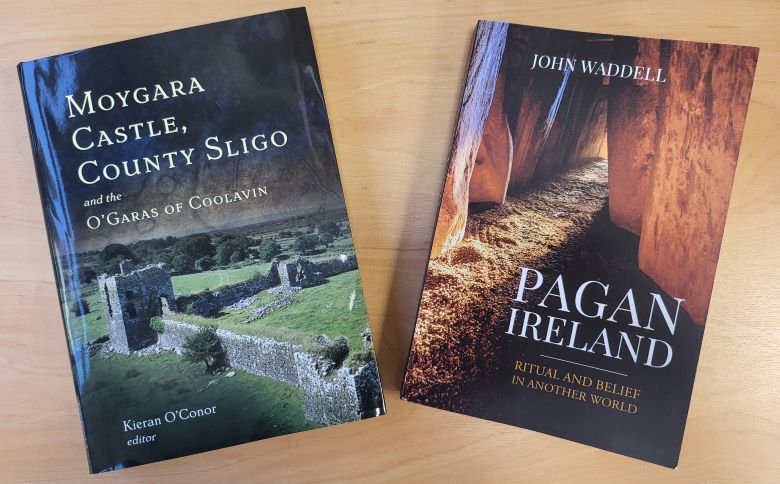
Congratulations to Dr Kieran O’Conor and Professor John Waddell on their recently published books.
Kieran O’Conor (ed) 2023 Moygara Castle, County Sligo, and the O’Garas of Coolavin. Four Courts Press, Dublin.
(Available now from Four Courts Press)
John Waddell 2023 Pagan Ireland: ritual and belief in another world. Wordwell, Dublin.
2nd Year BA Archaeological Field-class to Knocknarea
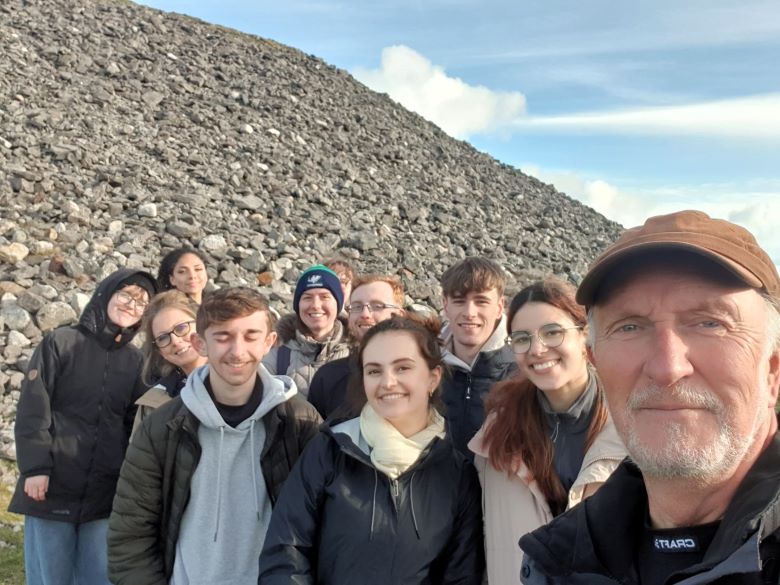
Happy second year BA Archaeology students, guided by Dr Stefan Bergh and Maggie Ronayne, on a field-class to Carrowmore and Knocknarea, Co. Sligo (Saturday, 21 October, 2023).
Rathcroghan in Bloom
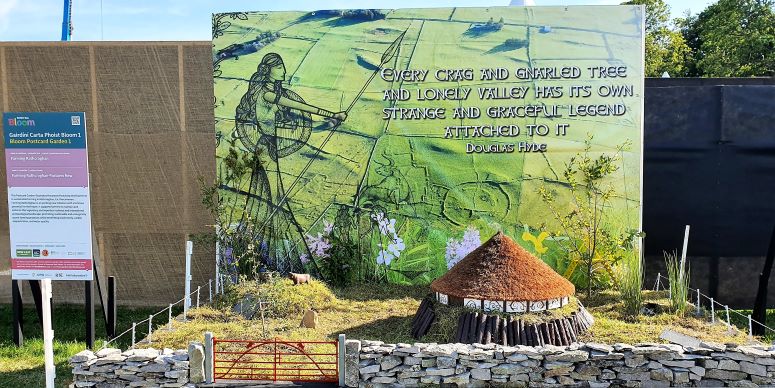
New MA Field-School at Rathcroghan (20-24 March 2023)
The Discipline of Archaeology in collaboration with the Discipline of Geography coordinated a joint field-school programme at Rathcroghan, the late prehistoric ‘royal’ capital of Connacht, for archaeology students undertaking the MA in Landscape, Archaeology & Heritage and geography students undertaking the MA in Rural Futures Planning & Innovation. This is a novel joint-teaching initiative within the School of Geography, Archaeology and Irish Studies and it proved to be a particularly rewarding educational and team-building experience for both staff and students. We hope to build on its success in the years to come.
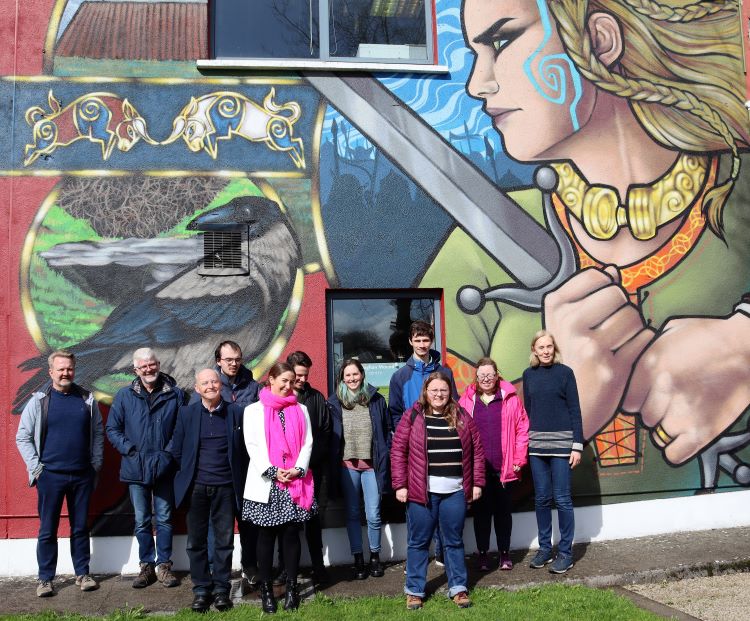 |
| Pictured (L-R): Joe Fenwick (Archaeological Field Officer), Conor Newman (Senior Lecturer and Head of Discipline, Archaeology), Richie Farrell (Manager, Farming Rathcroghan EIP Project), Damien Carter (Geography MA), Dr Therese Conway (Lecturer, above the Bar, Geography), Patrick McGarry (Geography MA), Stephanie Clark (Archaeology MA), Liam Conaghan (Archaeology MA), Bridget Dunleavy (Archaeology MA), Jacinta Ryder (Archaeology MA) and Dr Marie Mahon (Senior Lecturer, Geography, and Head of School). |
Dr Robert Hensey appointed Adjunct Lecturer to Archaeology
We are delighted to welcome Dr Robert Hensey as Adjunct Lecturer to the Department of Archaeology, School of Geography, Archaeology and Irish Studies.
Robert Hensey completed his PhD Ritual and Belief in the passage tomb tradition in Ireland at the Department of Archaeology here at the University of Galway in 2010. He has since been highly research active in areas relating to prehistoric ritual and mortuary practises in Western Europe. His focused expertise lies in the archaeology of Neolithic Ireland in a West European context and his extensive publications, and most especially his monograph First Light: The Origins of Newgrange has established him as a highly dynamic and prolific researcher at the forefront of Neolithic studies.
In the past number of years, as Chairperson of The Sligo Neolithic Landscape Group, Robert has been instrumental in the successful bid to place ‘The Passage Tomb landscape of Co. Sligo’ on Ireland’s Tentative List for UNESCO World Heritage Site status.
MA in Landscape Archaeology graduations - 29 November 2022
Congratulations to our MA in Landscape Archaeology scholars, who graduated on Wednesday 29 November 2022. This is Dr Stefan Bergh’s final year directing this remarkably successful programme (see our Graduate Student Research Pages) and it is particularly fitting to see it conclude on such a high note – the class of 2021-22 were a particularly wonderful bunch!
In its place, a new MA in Landscape, Archaeology & Heritage, under the direction of Conor Newman, is underway. We wish it all the success of the previous programme.
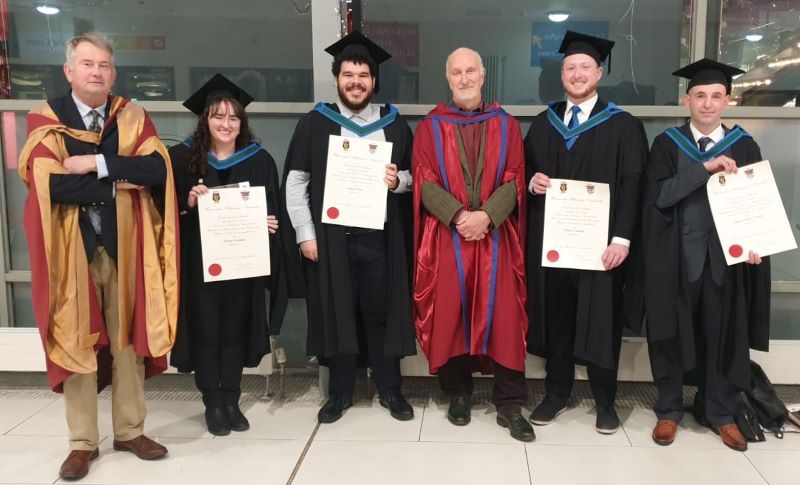
Pictured above (L –R): Dr Kieran O’Conor, Marissa Honeyman MA, Cameron Feiler MA, Dr Stefan Bergh, Joseph Normandy MA & Francis O’Connor (Adriano Odello MA and Caroline O’Hanlon absent).
Dr Karen Dempsey appointed lecturer at Cardiff University

Congratulations to Dr Karen Dempsey (pictured here with Dr Kieran O'Conor), our former Research Fellow in the Department of Archaeology, who has been appointed as Lecturer in Medieval Archaeology, in the School of History, Archaeology & Religion, Cardiff University. We are grateful for her valuable contribution to the School of Geography, Archaeology & Irish Studies, University of Galway, over the last few years and wish her all the best in her new post and future career.
New edition of 'The Prehistoric Archaeology of Ireland' published
|
A new edition of See Wordwell for additional information. |
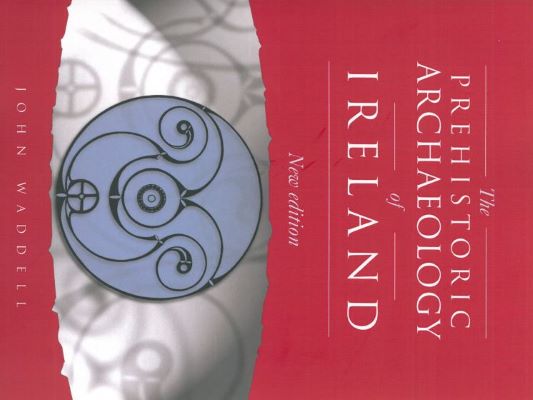 |
On present evidence the human settlement of Ireland commenced some ten thousand years ago and the prehistoric story thus covers over eight and a half thousand years. Now in a third edition, this book provides a chronological account of this long timespan and, with numerous illustrations, charts the development of the first hunting and foraging communities, the achievements of the earliest agriculturalists with their remarkable megalithic tombs, and the technological advances of the later bronze- and iron-using societies.
Recent decades have seen some exceptional developments in the study of the prehistoric archaeology of Ireland. New discoveries, excavations and research, new theoretical approaches and the increasing application of radiocarbon and tree-ring dating techniques have all made an enormous contribution to the better understanding of this remote past. As well as being a comprehensive and original review of the subject, this new edition answers the need for a detailed introduction to a large body of archaeological evidence resulting from the explosion of work completed in the last 15 years. In that respect it could be said to bring Ireland’s prehistoric past right up to date.
Author
Professor John Waddell is Emeritus Professor of Archaeology at the National University of Ireland, Galway, and his other works include The Bronze Age burials of Ireland, The funerary bowls and vases of the Irish Bronze Age and Foundation myths.
Caherconnell Excavations 2022

The international Caherconnell Archaeology Field School, under the direction of Dr Michelle Comber and Dr Noel McCarthy, returned to the field this summer. They excavated a number of sites including an Early Medieval cashel that proved rather interesting when the Early Medieval nature of the archaeological remains at Caherconnell in the Burren. On Thursday 14th July finds were followed by a concentration of prehistoric artefacts. This typifies the multi-period, the excavation team (and the landowners, the Davoren family) were delighted to welcome the president of the university, Professor Ciarán Ó hÓgartaigh, to Caherconnell to see the work of the fields-school.
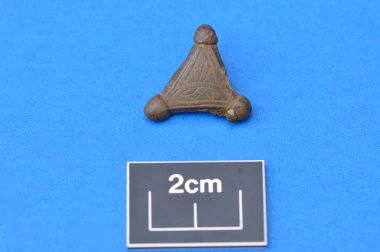 |
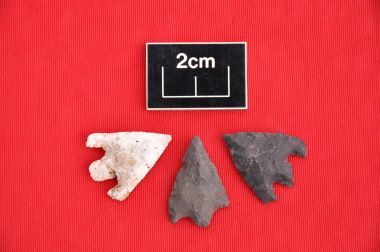 |
Some of this season's excavated finds: Early Medieval bronze fitting decorated with an interlace triangle, and three barbed and tanged Early Bronze Age arrowheads (one flint, two chert).
Archaeology, NUI Galway, ranked among the top 200
The Discipline of Archaeology, NUI Galway, is ranked amongst the top 200 archaeology departments worldwide according to the latest QS World University Ranking by Subject 2022.
Farming Rathcroghan EIP-AGRI Project vlog released
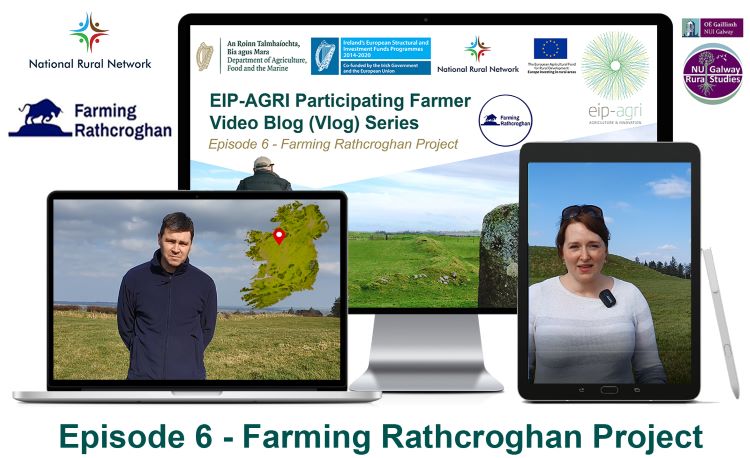
Click HERE to view the latest EIP-AGRI Participating Farmer Video Blog (Vlog), produced by Dr Maura Farrell and Dr Shane Conway, Rural Studies Centre, Discipline of Geography, which has been produced on behalf of the National Rural Network Project. It features Gerard Healy from the Farming Rathcroghan EIP-AGRI Project and Dr Petra Kock Appelgren, its Project Manager, who explain how this project is managing the internationally significant Rathcroghan archaeological landscape in a sustainable manner, whilst providing co-benefits for a range of ecosystem services, including the enhancement of biodiversity, carbon sequestration and water quality.
Dr Kieran O’Conor and Joe Fenwick, Discipline of Archaeology, contribute in an advisory capacity as Operational Group Members of the Farming Rathcroghan Project, an integral part of the outreach initiatives of The Connacht Project. This EIP project continues to go from strength-to-strength and the School of Geography, Archaeology and Irish Studies wish it continued success as it implements is programme of actions to safeguard and conserve this important archaeological landscape through innovative, sustainable and cost-effective farming management measures into the future.
Dr Daniel Curley receives his PhD
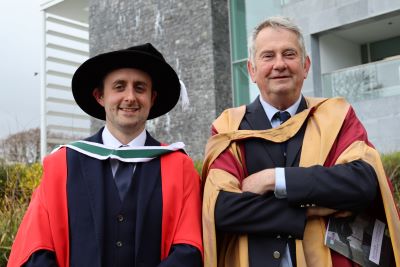 |
Many contragulations to Dr Daniel Curley |
MA in Landscape Archaeology graduations 2022
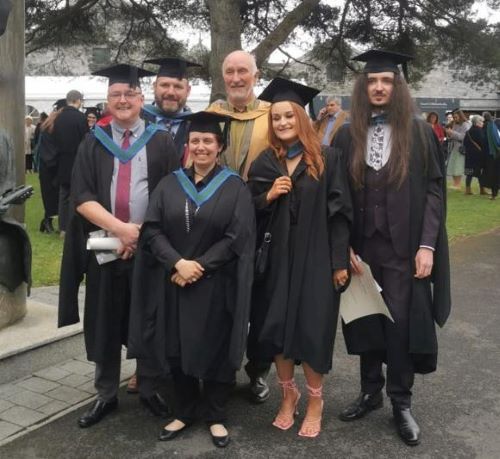 |
Pictured here (left to right): Stephen Conneely MA, (conferred 4 April 2022) |
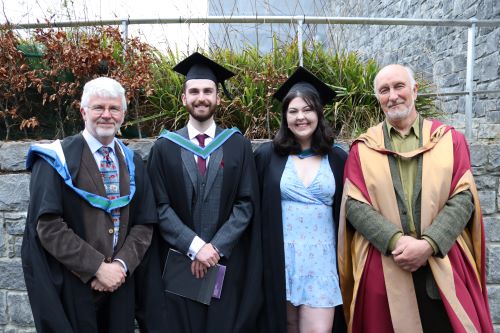 |
Pictured here (left to right):
Conor Newman (Senior Lecturer) (conferred 11 April 2022) |
Many congratulations to all our MA in Landscape Archaeology students, Matthew Adams MA, Stephen Conneely MA, Julia Gustafson MA (USA), Sarah Fahey MA, Delaney Hawk (USA), John Herbage MA, Emmanuel Hernandez (USA), Sarha Kmiecik MA (USA), Peter McDonagh MA, Bridget Melloy MA (USA), Madeleine Napier MA (USA), Logan O'Brien MA (USA), Jan Perez-Rosado (Puerto Rico, USA) and Katherine Perdue MA (USA), who were conferred with their MA in Landscape Archaeology degrees on Wednedsay 4 April and Monday 11 April 2022 (Alas, some, most notabley those from abroad and others due to Covid, couldn't attend the graduation ceremony).
A baseline survey towards UNESCO World Heritage status for Sligo Passage Tomb landscape

An extensive baseline field-survey of close-to one hundred passage tombs in Co. Sligo has just been published by The Sligo Neolithic Landscapes Group.
The survey was completed as part of a bid to place The Passage Tomb Landscape of County Sligo on Ireland’s list of UNESCO World Heritage Sites.
The aim with the survey is to create a baseline resource regarding the state of conservation of each passage tomb in its context, and to thereby assist in developing management, conservation, and presentation policies for the passage tomb landscape of Sligo.
Through extensive fieldwork, focused on current conservation and management issues related to each individual monument as well as their landscape context, a detailed record has been established for the entire group of monuments.
The publication is the first time that this extraordinary collection of Neolithic monuments, including an extensive photographic record, has been presented in a single volume.
The survey was undertaken by Dr Stefan Bergh (PI, NUI Galway), Dr Fiona Gallagher, Dr Robert Hensey and Padraig Meehan. GIS work was undertaken by Dr Noel McCarty (NUI Galway) and drone imagery was captured by Dr Paul Neassens, Western Aerial Survey.
The survey was primarily funded through The Heritage Council’s Heritage Sector Support Fund 2021, with additional generous support from Sligo County Council and NUI Galway.
Another commendation for Dr Eugene Costello's book
Dr. Eugene Costello, PhD graduate of NUI Galway, has just received a special commendation in the Publication Prize in Irish History for his publication Transhumance and the Making of Ireland's Uplands, 1550-1900, published in 2020 by Boydell & Brewer.
This is a second award for this book which is based on his PhD in Archaeology, NUI Galway, supervised by Dr Kieran O'Conor, which he received in 2016. Eugene was also awarded the American Conference of Irish Studies's Donald Murphy Prize for Distinguished First Book, just a few months ago. So, this is his second prize/honour for this book. Many congratulations yet again to Eugene.
|
Transhumance and the making of Ireland's uplands, 1550-1900 Published in 2020 by Boydell and Brewer |
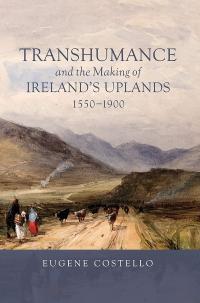 |
Ireland's oldest ink pen discovered at Caherconnell
Recent archaeological excavations at Caherconnell Cashel in the Burren, Co. Clare, by Dr Michelle Comber of the School of Geography, Archaeology, and Irish Studies at NUI Galway and the Caherconnell Archaeology Field School, have uncovered the oldest known ink pen in Ireland. The cashel, a settlement built in the late 10th century and used continuously through to the start of the 17th century, was home to wealthy local rulers. Their wealth was built on successful farming, allowing them to engage in fine craftworking, military pursuits, external trade, games, music, and, it seems, literacy.
The pen is made up of a hollow bone barrel with a copper-alloy nib inserted into one end. It was found in an 11th-century layer inside the cashel, and caused quite a stir when it was discovered. No ink pen of this form or early date has previously been found, and most evidence of early literacy in Ireland is associated with the Church, not with secular society. Those reasons urged caution and lead to the creation of a replica implement to test whether or not it functioned as a pen. Adam Parsons of Blueaxe Reproductions manufactured the replica, a replica that testing confirmed does work perfectly as a dip pen. So, it seems that this does indeed represent the earliest known ink pen in Ireland.
Feather quills were the more common writing implement at the time, but a pen like the one from Caherconnell would have been ideally suited to fine work – maybe even the drawing of fine lines, as suggested by expert calligrapher and historian Tim O’Neill: “A metal pen from such an early date is still hard to credit! But the fact that it functions with ink is there to see. It would have worked well for ruling straight lines to form, for instance, a frame for a page.” While Church scribes copied and created all manner of ecclesiastical texts, it seems likely that a secular scribe might have used a pen like this to record family lineages and/or trade exchanges.
All in all, an exciting find that expands the history of literacy in Ireland, and a most appropriate discovery for a university-based archaeologist to make.
“The Caherconnell Archaeology project has been a hugely rewarding one, with many unexpected and exciting discoveries along the way. This find has, however, exceeded all expectations, revealing the tantalising prospect of an advanced secular literacy in 11th-century Ireland.” - Michelle Comber
A full account of the discovery can be found in the 2021 Winter edition (Vol. 35, No. 4) of Archaeology Ireland magazine.
Rathra: a royal stronghold of early medieval Connacht
|
Available for purchase from the |
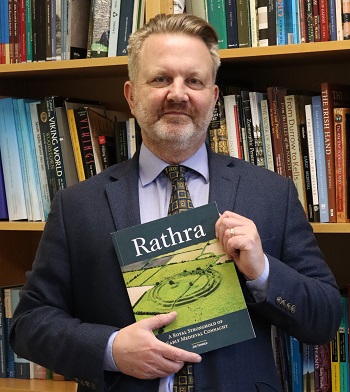 |
Château Gaillard Website Launched
The new website for the pan-European Château Gaillard castles research group is now live - see http://colloquechateaugaillard.eu/ . This website was created by Rory Sherlock and Kieran O'Conor and so it is effectively an NUI Galway production. The Chateau Gaillard group have held 29 conferences since 1962 and all of the proceedings of these meetings have been published.
Dr Eugene Costello awarded distinguished publication prize
|
|
 |
Sligo Megalithic Tombs Vandalised
The Irish Times
"Sligo's Neolithic Tombs are being vandalised 'on scale never seen before'"
by Marese McDonagh (Thursday 23-07-2020)
Sligo Weekender
"A visit to ancient monuments that we must protect"
by Alan Finn (30-07-2020)
Sligo Weekender - ancient monuments we must protect (part 1)
Sligo Weekender - ancient monuments we must protect (part 2)
'Farming Rathcroghan' EIP Project in the News (Project Manager vacancy - application deadline 15 Feb. 2019)
RTE Radio 1, Countrywide, Saturday 2 February 2019. Podcast ‘Tara of the West’ interview by Brian Lally https://www.rte.ie/radio1/countrywide/podcasts/
The Irish Examiner, Thursday 17 January 2019. ‘Rathcroghan project awarded 1 million grant’
The Roscommon Herald, Tuesday 22 January 2019. ‘NUIG welcomes Rathcroghan project’. 18-19.
Irish Farmers Journal, Monday 14 January 2019. ‘Farmers awarded €1m to aid in preservation of historic site’ by Barry Cassidy
https://www.farmersjournal.ie/farmers-awarded-1m-to-aid-in-preservation-of-historic-site-432850
The Roscommon Herald, Tuesday 8 January 2019. ‘Rathcroghan farmers and heritage to both benefit from new EU initiative’ by Darragh Kelly. 40-41.
Click on the following links for more information on:
the 'European Innovation Partnership, EIP-AGRI projects',
the 'Farming Rathcroghan EIP-Agri Project, Rathcroghan Visitor Centre'
the 'National Rural Network; EIP-Agri Operational Groups, Ireland' and
the 'Rathcroghan research as part of the The Connacht Project, NUI Galway'
Click here for information concerning Farming Rathcroghan Project Manager Vacancy (Deadline 15 February 2019)
MA in Landscape Archaeology - Dublin excursion
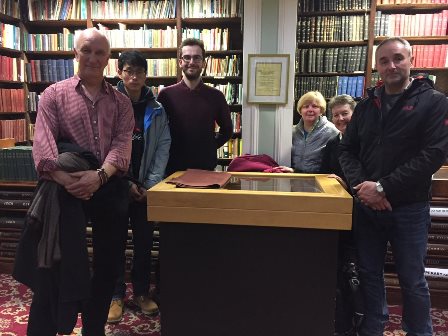 |
Dr Stefan Bergh (MALA Director), |
| The MA in Landscape Archaeology would like to thank Matt Seaver, National Museum of Ireland (MMI), Margaret Keane and Rachel Barrett, National Monuments Service, Department of Culture, Heritage and the Gaeltacht, Paul Ferguson, Trinity College Map Library, Brian Donnelly, National Archives of Ireland, Claire Doohan, National Folklore Collection UCD, and Siobhan Fitzpatrick, Royal Irish Academy, for taking the time to facilitate the class while on their busy field-schedule to Dublin on Monday 4th and Tuesday 5th February 2019. It was a wonderful experience for all and very much appreciated. |
|
Claregalway Educate Together National School 'activity week': archaeology in the classroom.
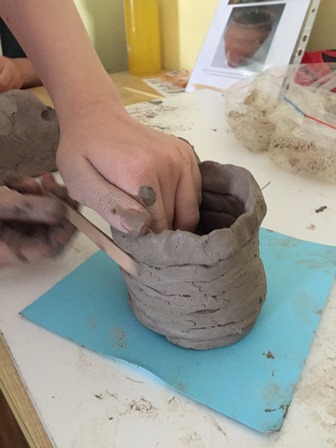 |
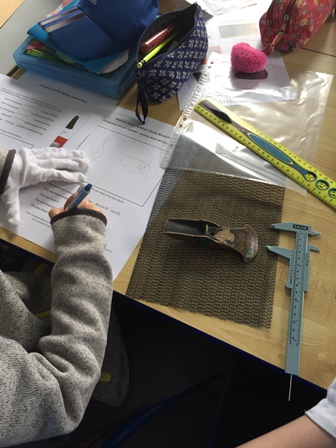 |
As part of Claregalway Educate Together National School’s ‘Activity Week’ (18-20 Feb. 2019) there were three archaeologically-themed sessions among a host of other novel educational, sport and craft activities given by the parents of kids attending the school. Markus Byrne (PhD candidate, NUI Galway) introduced 1st and 2nd classes to ogham inscription and each child was given the opportunity to write their name using this coded system of dots and lines. Joe Fenwick (Archaeological Field Officer, NUI Galway) introduced 3rd and 4th classes to a scientific study of ‘ancient axes’ and also 5th and 6th classes to the wonders of 'prehistoric pottery' as part of an archaeological artifact workshop. It was more fun than you can imagine, and the school-kids enjoyed it even more!
PhD Graduation: 21 March 2019
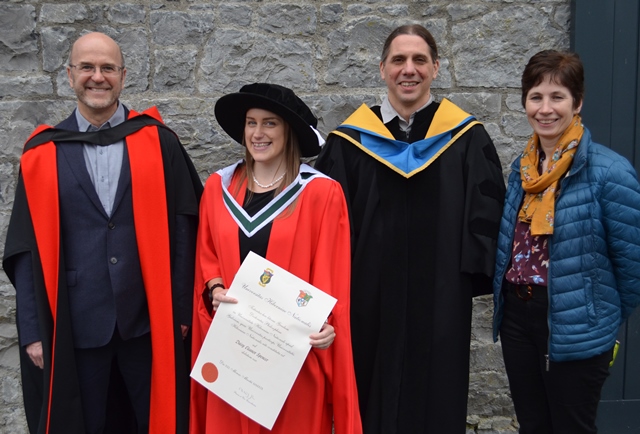
On March 21 Daisy Spencer received her PhD in Archaeology for her thesis ‘People, Land-use and Time: Linking Multi-Proxy Palaeoenvironmental Data to the Archaeological Record of Prehistoric Co. Clare, Ireland.’ Dr. Spencer’s research spanned both the archaeological and palaeoenvironmental fields and she is pictured here with her supervisor Dr. Carleton Jones (Archaeology), co-supervisor Dr. Aaron Potito (Geography), and Dr. Karen Molloy (Palaeoenvironmental Research Unit).
Dr. Spencer is now employed as a Post-Excavation Archaeologist for Irish Archaeological Consultancy Ltd. where she is dealing with all aspects of the post-excavation process including artefact and environmental sample processing, archaeological report editing, and preparing material for specialist analyses.
Farming Rathcroghan: Field Monument Advisor job vacancy
Roscommon County Council invites proposals from a suitably qualified consultant/s to provide Field Monument Advisor / Archaeological Consultancy Services to the Farming Rathcroghan EIP Project.
The Farming Rathcroghan Operational Group was granted a project budget of €0.984 million, through the Department of Agriculture, Food and the Marine (DAFM) EIP-Agri fund, for an innovative project to address the declining socio-economic circumstances of the farming community, while addressing the need to preserve and create awareness of the unique archaeological landscape around Rathcroghan. This project will run until December 2023. The knowledge gained from this EIP has the potential to be replicated in future EU-funded schemes.
The Farming Rathcroghan EIP Project proposes to improve the socio-economic circumstances of farming, through testing innovations in the provision of a range of environmental and ecosystem services designed to protect and maintain the cultural landscape (e.g. landscape quality and archaeological condition, aesthetic and cultural services, promoting quality food production, enhancing biodiversity, improving carbon sequestration and water quality).
The Field Monument Advisor will be an integral support to the Farming Rathcroghan EIP Project. This role is a multi-faceted one, which will evolve as the project develops. The overall goal being a sustainable improvement to the socio-economic circumstances of the Rathcroghan farming communities, while preserving and creating awareness of this unique archaeological landscape.
Closing date for quotations is 09.30 am on Monday 15th July 2019.
See http://www.roscommoncoco.ie/en/Job_Vacancies/Current-Vacancies/
Please contact Nollaig Feeney, Heritage Officer, or Claudette Collins if you have any queries
Roscommon County Council, Áras on Chontae, Roscommon, F42 VR98.
090 6637135 www.roscommoncoco.ie
Daniel Curley awarded Council of Irish Chiefs and Clans of Ireland Prize in History 2019
We are delighted to announce that Daniel Curley, one of our PhD candidates, has recently been awarded the Council of Irish Chiefs and Clans of Ireland Prize in History 2019 for his submitted essay entitled 'Uilliam Buide Úa Cellaig and the late medieval renaissance of the Uí Maine lordship'. Gathering evidence from archaeological remains, toponymy, historical and literary source material, Daniel explores the career of the fourteenth century king of Uí Maine, Uilliam Buide Úa Cellaig. Inspected in this way, Úa Cellaig's career has served as an important case study in understanding the nature of later medieval Gaelic lordship, and shines a light on the medieval history of an understudied part of Ireland.Congratulations to Dr Daisy Spencer
|
Congratulations to Dr Daisy Spencer, who after just |
|
|
on 21 March 2019. Pictured here with supervisors (L to R): Dr Carleton Jones (Archaeology), Dr Aaron Potito (Geography), Dr Karen Molloy (Palaeoenvironmental Research Unit). |
Liam Reilly announced Global Undergraduate Awards Regional Winner for the Island of Ireland 2019
Liam Reilly, student of Irish Studies and Celtic Civilisation at NUIG, has been announced as the Global Undergraduate Awards Regional Winner for the Island of Ireland 2019 for the final essay he submitted for Archaeology module AR2101 Early Kingship: From Chaos to Cosmos. His essay was titled “What is the question to which sacral kingship is the answer, and how does sacral kingship answer the question?”
This year there were 3,437 contestants across 25 subject-area categories. Liam submitted under the category Classical Studies and Archaeology, and was short-listed alongside students from the University of Sydney (Australia), McGill University (Canada), University of Tennessee (USA), Durham University (UK), University of Edinburgh (UK), University of Reading (UK). Our congratulations to them all.
Previous winners from NUI Galway Archaeology include Louisa Brophy Brwon (2014), Marcus Byrne (2003) and Seamas McGinley (2012). President Michael D. Higgins is the patron of the awards.
Prestigious 'Excellence in Education Awards 2020' go to NUI Galway and the College of Arts, Social Sciences, & Celtic Studies.
Congratulations to all in the College of Arts, Social Sciences and Celtic Studies and all those dedicated individuals involved in educational excellence throughout NUI Galway!
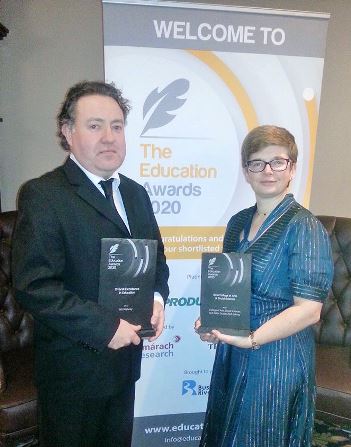 |
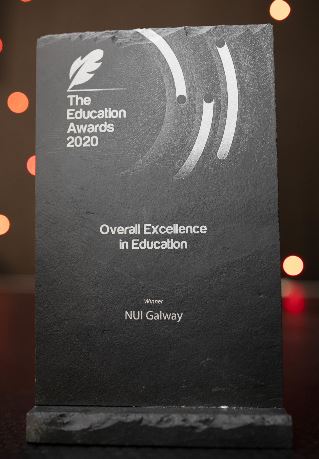 |
Amongst those collecting NUI, Galway's 'Best College of Arts and Social Science' award and the 'Overall Excellence in Education' award at the Education Awards 2020 (and also shortlisted for 'Best use of Educational Technology' for our online archaeology programmes) were our own Dr Michelle Comber and Dr Noel McCarthy.
For additional photographs of the awards event see:
https://www.flickr.com/photos/126783463@N05/49564892677/in/album-72157713196368911/
.
Gortscéala launched
|
Gortscéala - The Newsletter of the School of Geography,
To view it, click on the pdf link below: |
 |
New study of ancient genomes uncovers surprising details about Ireland’s first farmers
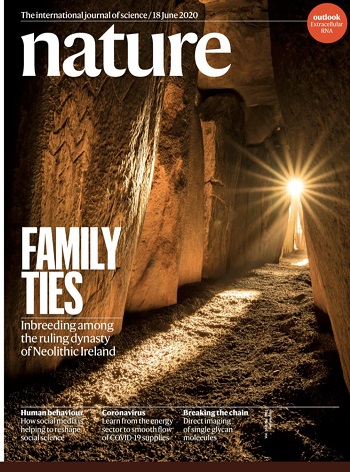 |
|
A team of archaeologists (including Dr Carleton Jones from the National University of Ireland Galway and Dr Ros Ó Maoldúin, a graduate of NUI Galway) and geneticists, led by those from Trinity College Dublin, have shed new light on various aspects of some of the earliest periods of Ireland’s human history.
Among their incredible findings is the discovery that the genome of an adult male buried in the heart of the Newgrange passage tomb points to first-degree incest, implying he was among a ruling social elite akin to the similarly inbred Inca god-kings and Egyptian pharaohs.
The survey of ancient Irish genomes, recently published in leading international journal, Nature, suggests a man who had been buried in this chamber belonged to a dynastic elite. The research, led by the team from Trinity, was carried out in collaboration with colleagues from University College London, National University of Ireland Galway, University College Cork, University of Cambridge, Queen’s University Belfast, Sligo Institute of Technology and the National Monuments Service, with support from the National Museum of Ireland and National Museums Northern Ireland.
Interestingly, one of the authors of the study, Dr Ros Ó Maoldúin, a Senior Archaeologist with Archaeological Management Solutions who received his PhD from National University of Ireland Galway recognised that a medieval myth resonates with these results and with the Newgrange solar phenomenon. First recorded in the 11th century AD, four millennia after construction, the story tells of a builder-king who restarted the daily solar cycle by sleeping with his sister. The Middle Irish place name for the neighbouring Dowth passage tomb, Fertae Chuile, is based on this lore and can be translated as ‘Hill of Sin’.
“Given the world-famous solstice alignments of Brú na Bóinne, the magical solar manipulations in this myth already had scholars questioning how long an oral tradition could survive,” said Dr Ros Ó Maoldúin. “To now discover a potential prehistoric precedent for the incestuous aspect is extraordinary.”
Other significant findings came from the analyses of individuals buried in the Parknabinnia court tomb which was excavated by a team led by National University of Ireland Galway archaeologist Dr Carleton Jones. Here, a significant difference in the frequency of two Y chromosome haplogroups was found between individuals buried in the Parknabinnia monument and those buried in the nearby Poulnabrone portal tomb which suggests that distinct male line descent groups built and used these monuments. This is a remarkable discovery as the use of these two monuments overlapped for several centuries and they are both located on the Burren only 10km apart. The people who built and used both Parknabinnia and Poulnabrone were some of the earliest farmers in Ireland, descended from groups that arrived in Ireland shortly after 4000 BC, but what became of the earlier hunter-gatherer groups that inhabited Ireland for many thousands of years before these farmers arrived has long been an open question. One of the individuals from Parknabinnia tested in this study goes some of the way to answering this interesting question.
“This individual could trace their ancestry to both the newly arrived farmers and to the indigenous hunter-gatherers of Ireland, showing that at least some mixing of these disparate populations occurred” said Dr Carleton Jones.
Excavating human bones in the Parknabinnia court tomb. The calcareous limestone of the Burren from which it is built and upon which it sits has led to remarkably good preservation conditions for the bone. In turn, this has resulted in remarkably well-preserved ancient DNA.
The genetic research was funded by a Science Foundation Ireland/Health Research Board/Wellcome Trust Biomedical Research Partnership Investigator Award to Dan Bradley and an earlier Irish Research Council Government of Ireland Scholarship to Lara Cassidy.
The full article can be found in the journal Nature:
Lara M. Cassidy, Ros Ó Maoldúin, Thomas Kador, Ann Lynch, Carleton Jones, Peter C. Woodman, Eileen Murphy, Greer Ramsey, Marion Dowd, Alice Noonan, Ciarán Campbell, Eppie R. Jones, Valeria Mattiangeli & Daniel G. Bradley (2020) ‘A dynastic elite in monumental Neolithic society’ Nature 582, 384 – 88. https://doi.org/10.1038/s41586-020-2378-6
Good news for Dr Eugene Costello, our former PhD student
Dr Eugene Costello has recently released a book entitled, Transhumance and the Making of Ireland’s Uplands, 1550-1900. Based on his PhD in Archaeology at NUI Galway (2016), and completed during fellowships at University of Notre Dame and Stockholm University, it is now published in hardback and ebook form by the international academic press, Boydell & Brewer (with 35% discount off hardback until the end of 2020 with the code BB135).
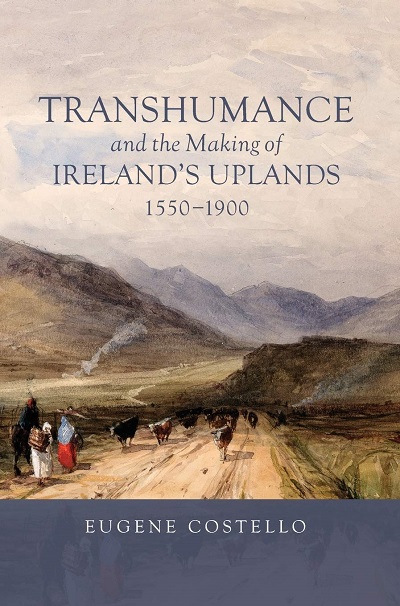
Dr Costello is currently based at University College Cork, where he holds a prestigious National University of Ireland Postdoctoral Fellowship in Humanities, and has also been offered Marie Skłodowska-Curie and Teaching@Tübingen fellowships. As part of his new research, he is developing a radical periphery-centred perspective on the emergence of capitalism in late medieval and early modern Europe, paying particular attention to the role of upland farmers in feeding the growth of urban-industrial centres. Furthermore, he has now also been awarded a major grant of roughly €430,000 from the Swedish Research Council. When this starts, it will allow him to lead more detailed archaeological fieldwork, documentary research and palaeo-environmental analysis with collaborators in both Ireland and Sweden.
Château Gaillard 29 published
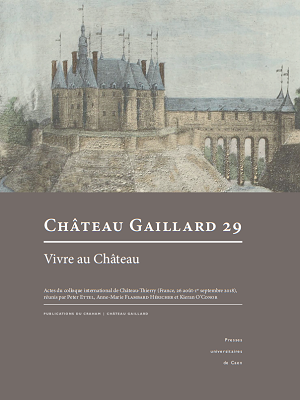 |
Château Gaillard 29: Vivre au Château, The articles in this volume There is a strong Department of Archaeology,
|
Bid for Sligo’s Passage Tomb Landscapes to be named UNESCO World Heritage Site
Queens Maeve’s Cairn atop Knocknarea is an iconic landscape feature of County Sligo and forms part of Sligo’s Neolithic passage tomb tradition. Along with the megalithic cemeteries of Carrowmore and Carrowkeel, these monuments have few counterparts in the world, in terms of their number, quality of preservation and their striking landscape contexts.
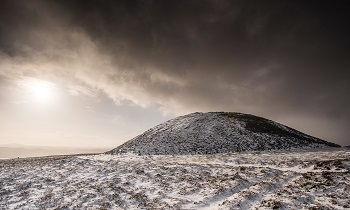 |
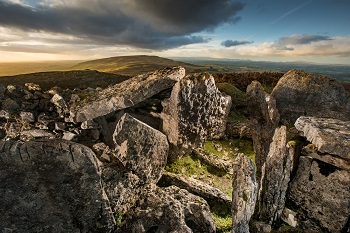 |
| Queen Maeve's Cairn, Knocknarea. (photo: Ken Williams) | Cairn E, Carrowkeel. (photo: Ken Williams) |
For many years concerns have been raised over increased visitor pressure and the deteriorating condition of these sites. Many of these world class monuments are under threat and require long-term management and conservation for the benefit of all and future generations. Engagement, consultation and partnership will be important in building support for a shared vision of how these sites can be sustainably managed into the future.
In January 2019, the Minister for Culture, Heritage and the Gaeltacht opened applications for Ireland’s Tentative List of properties for potential future nomination to the World Heritage List 2020-2030. The Department of Housing, Local Government and Heritage is currently seeking applications from Local Authorities for sites or properties which are considered to be of outstanding universal value (OUV), for inclusion on the new Tentative List. No site can be nominated for World Heritage status without first being placed on Ireland’s Tentative List. The Department is responsible for deciding which sites should be placed on the Tentative List and for submitting any eventual World Heritage nominations to UNESCO. The deadline for receipt of applications to Ireland’s Tentative List of World Heritage Sites is the 30th June 2021.
During 2020, the Sligo Neolithic Landscapes group (www.sligoneolithic.org) sought the support of Sligo County Council to prepare and submit an application to Ireland’s Tentative List for The Passage Tomb Landscapes of County Sligo. Sligo County Council is currently working with the Sligo Neolithic Landscapes group and other key stakeholders to submit an application by the end of June 2021.
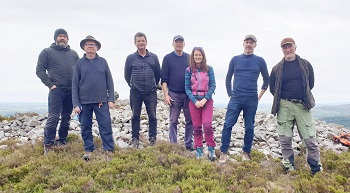 |
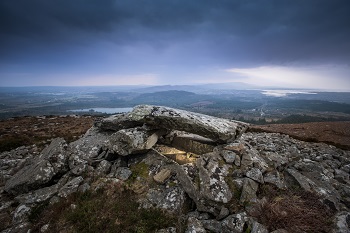 |
| Sligo Neolithic Landscapes Group (photo: Ken Williams) | Cailleach an Vera's House, Ballygawley. (photo: Ken Williams) |
At Sligo County Council’s meeting on 1st February 2021, Cathaoirleach of Sligo County Council, Cllr. Dara Mulvey said that:
‘There is no doubt that Sligo’s Neolithic Landscapes are an exceptional heritage asset for the county and that they are unparalleled in world terms. Sligo County Council welcomes this community led initiative.’Cllr. Donal Gilroy, Chair of Sligo Heritage Forum added:
‘The partnership between Sligo County Council and the Sligo Neolithic Landscapes Group marks the beginning of a process that will see the future sustainable management of these monuments’.If successful, the bid would begin building a process of communication and cooperation between all stakeholders with a shared interest in the sustainable management and promotion of Sligo’s Neolithic Landscapes. Attaining World Heritage Site status requires a sustained effort and common purpose by all key stakeholders over many years.
Dr Stefan Bergh, School of Geography, Archaeology and Irish Studies, NUI Galway, and member of the Sligo Neolithic Landscape group, has said:
‘The passage tombs of County Sligo and their careful landscape settings are an extraordinary example of Neolithic architecture and ritual, with few if any international counterparts. They represent one of the greatest achievements of Sligo people and fully deserve UNESCO World Heritage Site recognition.’If a site is successful in being placed on Ireland’s Tentative List for World Heritage Sites, there is considerable work and time involved in the preparation of nomination documentation, which would include a management plan and a public consultation process. This stage of the process, together with the public consultation, takes at least two years. Thereafter the inscription process takes about a year and a half from the submission of the complete nomination document and management plan to consideration by the World Heritage Committee.
New insights on the impact of prehistoric farming in western Ireland
|
|
A new publication from former NUIG PhD Spencer, D.E., Potito, A., Molloy, K., |
This paper presents the results of a multi-proxy, palaeolimnological investigation of Lough Inchiquin, a large lake located immediately south of the Burren, a distinctive karst landscape in Co Clare, western Ireland which has been exploited since the Neolithic period. Chironomid sub-fossil analysis and lake sediment geochemistry provides an opportunity to infer lake response to prehistoric farming activity. The results of these new analyses are contextualised by pollen and loss-on-ignition evidence from the same lake catchment. The combined data of chironomid, loss-on-ignition (LOI550, LOI950 and non-combustible fraction (NCF)), organic geochemistry (δ13Corg, δ15N, Corg:N ratio), inorganic geochemistry (Ti, Fe, Mn, S and δ18O) and fossil pollen has allowed for an in-depth understanding of the palaeolimnological and palaeoenvironmental changes from the Mesolithic to the Late Bronze Age (c. 4590–660 BC) in the catchment of Lough Inchiquin. The data highlight the increasing ecological impact of anthropogenic activity through time and provide well-dated evidence for the initiation of Holocene soil erosion from the Burren.
Julia Gustafson awarded Gates Cambridge Scholarship
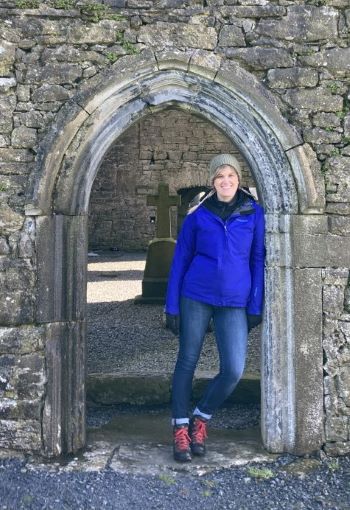 |
Many congratulations to Julia Gustafson, This new adventure will build on her background As a Gates Cambridge Scholar, Julia is becoming |
Battlefield Archaeology and Snapchat
|
It's great to see Kylie Crowder, Madeline Napier, who graduated from NUI Galway Great reading. Do get a copy! |
 |
MA in Landscape Archaeology Burren Field-school 2021

Some photos of the MA in Landscape Archaeology students of 2020/21 in their natural environment - the expansive outdoor archaeological laboratory of the Burren in Co. Clare.
PhD graduations: 23 November 2016
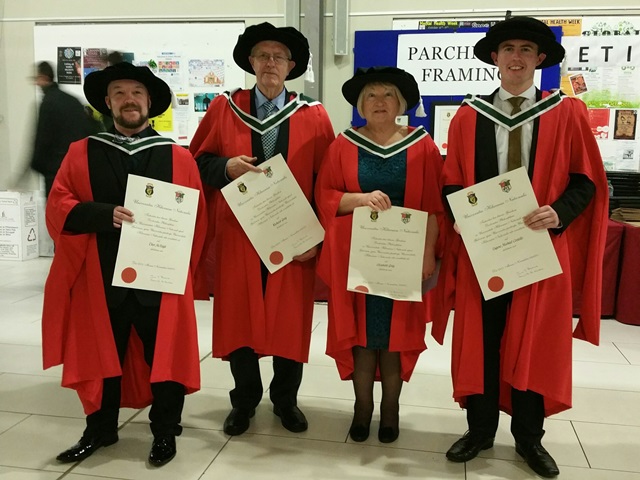
Many congratulations to Dr Thor McVeigh, Dr Richard Gray, Dr Betty Gray and Dr Eugene Costello, pictured above, who recieved their PhDs in Archaeology on 23 November 2016 - an outstanding achievement individually and a major milestone for the Discipline of Archaeology!
Vodcasts of Spring Lunchtime Lecture Series 2015 (Natural and Human Heritages)
Dr Brídín Carroll
Locating the Locale of Local Food.
A review of Irish consumers’ varied understandings of ‘local food’, arising from research which recognises the power attributed to localisation to address the ‘grand challenges’ facing the food system.
Dr Frances Fahy & Dr Mary Jo Lavelle
What’s Ireland Consuming?
Household consumption remains somewhat of a black box for policymakers. Focusing on external conditions – the impact of a global recession and economic downturn – we examine consumption activities based on a survey of 1,500 households.
Dr Maura Farrell
Rural Ireland: Moving Forward or Remaining the same.
Rural Ireland has witnessed unprecedented change in recent decades. These changes in contemporary spaces of rurality have resulted in the agricultural community sharing the landscape with a diversity of people, industry and communities.
Joe Fenwick
Repopulating the Archaeological Landscape of the Brú na Bóinne World Heritage Site.
A presentation of the re-emerging traces and places of past human settlement and activity hidden in the shadow of the great prehistoric monuments of the ‘bend of the Boyne’.
Conor Newman
The Sword in the Stone: the Galway Connection
Though usually considered the stuff of kingly legend, the motif of the sword in the stone appears to have some basis in reality. The story begins on the Maree peninsula.
Turlough Hill Excavations 2016, Co. Clare.
'Mystery surrounds Burren settlement excavated by archaeologists'an article by Lorna Siggins, Western Correspondent of The Irish Times (Saturday 30 April, 2016)
Archaeological research at the royal site of Rathcroghan, Co. Roscommon.
'Researching Rathcroghan, the Tara of the West'
an article by Lorna Siggins, Western Correspondent of The Irish Times (Satruday 9th November, 2016)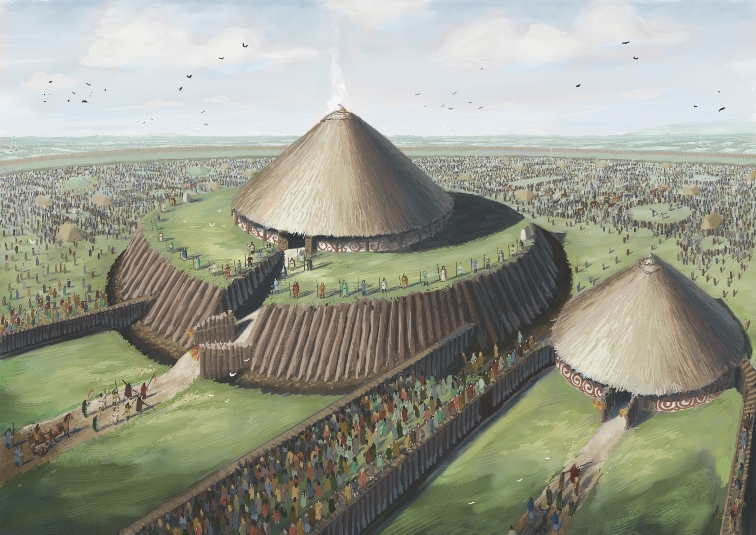
A conjectural reconstruction of Rathcroghan Mound, by J.G. O’Donoghue (Archaeological Illustrator) in collaboration with Joe Fenwick (Archaeological Field Officer, NUI Galway), as it might have looked during the Later Iron Age, some 2000 years ago (©J.G. O’Donoghue/Roscommon County Council).
Hikers putting 5000-year-old Co. Sligo cairn at risk
In a recent report in the The Irish Times by Marese McDonagh, Dr Stefan Bergh draws attention to vulnerability of the prehistoric archaeological remains on Knocknarea, Co. Sligo, and most particularly the damage being caused to the prominent passage tomb on its summit know as Queen Maeve’s cairn by the increasing numbers of people climbing it..
Journal of Irish Archaeology Vol. 24
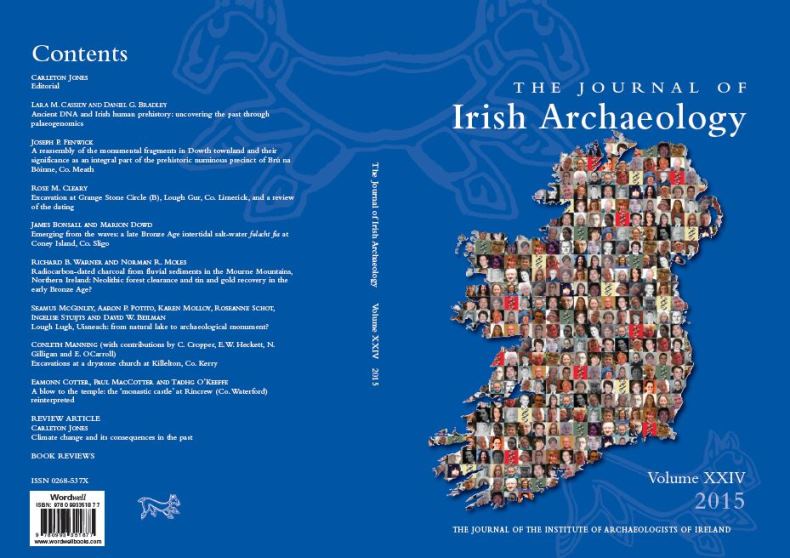
Volume 24 of the Journal of Irish Archaeology will be appearing very soon. The image on the cover, designed by Angela Gallagher, is intended to highlight the importance of ancestry in the history and prehistory of Ireland. It is composed of a collage of Irish faces and I want to thank everyone who contributed photos towards this illustration. The criteria was that the individuals in the photos had four Irish grandparents which means that the phenotypic traits displayed in the faces, while not necessarily ancient, do have some time depth. Archaeology is now rapidly entering an era in which ancestry (at a variety of scales) will play a much greater role in our interpretations. This shift is being driven by methodological advances in ancient DNA (aDNA) research and I am excited to lead volume 24 of the Journal of Irish Archaeology with a specially commissioned piece by Lara Cassidy and Dan Bradley of the Smurfit Institute of Genetics, Trinity College Dublin in which they explain these recent methodological advances, bring us up to date with current aDNA research in Ireland, and point towards the future directions of this research.
A celebratory event in honour of Conor Newman
... to mark the conclusion of his role as chair of the Heritage Council from 2008-2016 was held in the Moore Institute, NUI Galway on Tuesday evening 7th March 2017.
|
|
|
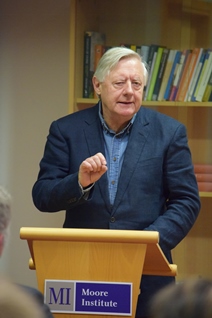 |
With words from his friends and colleagues Dr Kieran O’Conor and Professor John Waddell and musical interludes provided by Jim Higgins, (Bodhran), Maritin O’Conor (accordion) and special guest, Beatrice Newman (violin) and also by sean-nós singer in residence, Sarah Ghriallas. It was quite an event.
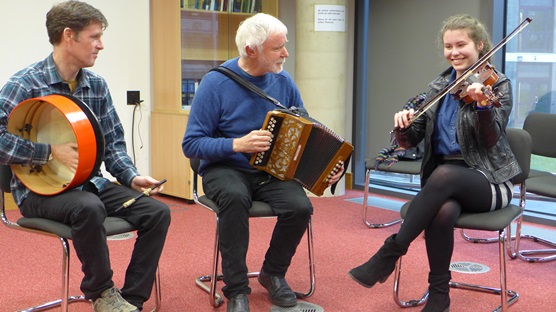 |
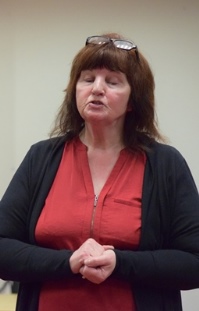 |
Setting Higher Standards
|
In recognition of her outstanding work, Sandra Getty
|
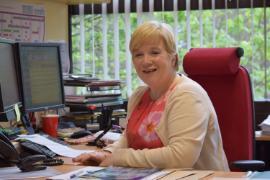 |
'Islands in a Global Context'
 |
Islands in a Global Context edited by NUI Galway’s
|
Sligo Neolithic Heritage Guide launched
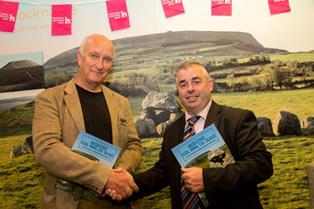 |
|
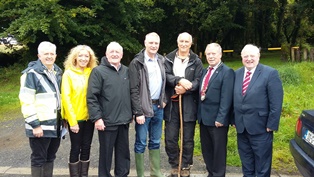 |
 |
Dr Stefan Bergh’s guide to ‘Neolithic Cúil Irra: Knocknarea – Carrowmore – Carns Hill’, published by Archaeology Ireland ( Heritage Guide No. 78), was launched by Minister Kevin ‘Boxer’ Moran T.D., Minister of State with responsibility for the Office of Public Works (OPW) and Flood Relief in the Carrowmore Visitor Centre, Co. Sligo, on Monday 21st August 2017. This was followed by a well-attended guided tour of Carns Hill led by Dr Bergh on Tuesday as part of Heritage Week. (Read More).
Dr Kieran O'Conor awarded AIA Samuel Kress Lectureship in Ancient Art 2017-18
|
|
Dr Kieran O'Conor
School of Geography and Archaeology
Archaeological Institute of America |
The School of Geography and Archaeology is particularly proud to announce that Dr Kieran O’Conor was one of two archaeologists from Europe who has been awarded the annual Archaeological Institute of America's (AIA) Samuel Kress Lectureship in Ancient Art for the academic year 2017-18. This is the first time that the AIA has chosen a medieval archaeologist for this prestigious award. Dr O’Conor is currently on tour and presenting his research to AIA chapters across the USA and Canada. He will be giving lectures in the Wooster (Ohio), Denver, Tucson, Spokane, Winnipeg, St Louis, Athens (Georgia), Orlando, Gainesville (both in Florida), San Antonio (Texas), Worcester (Mass), Long Island (New York), Ottawa, and Narragansett (Rhode Island). Phew! Whilst in America, Dr O’Conor has also been asked to lecture at a number of other venues not linked to the AIA.
'Islands in a Global Context' book-launch
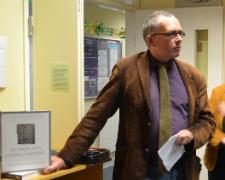 |
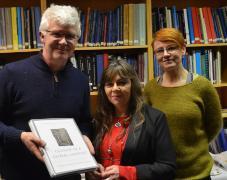 |
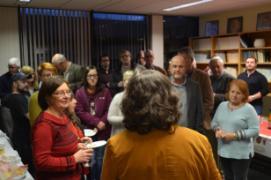 |
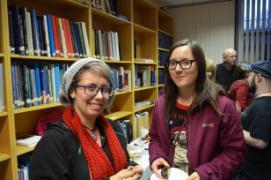 |
‘Islands in a Global Context’, the proceedings of the 7th international conference on Insular Art which was hosted by NUI Galway in 2016, got a suitably festive launch by Professor Michael Clarke, Classics, School of Languages, Literatures and Cultures, at the Archaeology Christmas party on Tuesday 5th December 2017.
This lavishly illustrated volume of essays, written by 30 of the world’s leading experts in the medieval art of Ireland and Britain, was edited by NUI Galway archaeologists Conor Newman, Mags Mannion and Fiona Gavin. NUI Galway was selected to host the conference because of the huge contribution that its scholars, from as far back as the 1970s, have made to the study of some of the most remarkable art objects dating from the Iron Age to the Middle Ages, including the Book of Kells, the Ardagh Chalice, the Tara Brooch, the monumental High-Crosses, Romanesque sculpture, and so on. The essays in this 7th volume look particularly at the way Insular Art was influenced by the Continent. There is a strong emphasis on decoding the symbols used in this art and getting to the deeper meanings hidden in the tiniest details of some of the most iconic objects produced on these islands. We are fortunate many of these artefacts are on display at the national Museum of Ireland for all to see.
Islands in a Global Context: Four Courts Press, 320pp, colour ilus, large format, €60.00
MA in Landscape Archaeology graduation 2018
Congratulations to the MA in Landscape Archaeology class of 2017-2018 who are pictured here with the Programme Director, Dr Stefan Bergh, on their graduation day, 21 November 2018.
Left to right: Alan Joyce MA, Winifred Feeney MA, Kelsey Holmes MA, James Mullally MA, Suzanne Hogan MA, Donna Sessions MA, Matheua Munoz de Almeida MA, Marta Krzywda MA and Marie Moran MA - Scholars one and all!
‘Farming Rathcroghan Project’ awarded €0.98m under EIP-Agri initiative
|
Some members of the Rathcroghan Resource Community
|
Left to Right: Kieran Kenny, |
We are delighted to announce that the Rathcroghan Resource Community has been successful in its bid under the European Innovation Partnership (EIP-Agri), through the Department of Agriculture, Food and the Marine, for its project entitled ‘Farming Rathcroghan: Sustainable Farming in the Rathcroghan Archaeological Landscape’ and has been awarded a grant of €0.98m to implement this project over the course of the next five years (see National Rural Network EIP-Agri).
The Farming Rathcroghan project has been developed using a locally led partnership approach. Its operational group, the Rathcroghan Resource Community, consists of a Lead Partner, Farming Rathcroghan CLG (comprising directors from Rathcroghan Farmers, Tulsk Action Group and Rathcroghan Visitor Centre) and various Operational Group Members (comprising; Archaeology, School of Geography and Archaeology, NUI Galway; Roscommon County Council; Teagasc, Agriculture and Food Development Authority; World Heritage Unit, National Monuments Service, Department of Culture, Heritage and the Gaeltacht).
Rathcroghan is a particularly well-preserved and internationally significant archaeological landscape, one of a small group of ‘royal’ sites which are included under the Department of Culture, Heritage and the Gaeltacht’s tentative list for UNESCO World Heritage Status (Royal Sites of Ireland). The Farming Rathcroghan Project’s objectives are to manage, care for and conserve this important cultural landscape by implementing a programme of economically sustainable and ecologically sound farming practices, and also facilitating visitor access to the area. The project will formulate, test and develop a suite of innovative management solutions designed to sustain a viable and vibrant rural farming community in the context of a culturally and ecologically sensitive landscape. In so doing the project aims to raise awareness among the general public of the significance of Rathcroghan as a farmed archaeological landscape and promote the proactive role of farmers and farming in the care and maintenance of the living landscape in harmony with its rich cultural heritage and ecological assets. As part of this programme it will implement a range of best farming and archaeological practice to actively monitor, manage, maintain and present this ancient cultural landscape in an environmentally and ecologically-friendly way. Through engagement with key stakeholders and the National Monuments Service, archaeological expertise will be made available locally through the Farming Rathcroghan Project to facilitate and support the local farming community to protect, manage and conserve the archaeological and cultural landscape of Rathcroghan.
We look forward very much to addressing the many challenges posed by this ambitious project and to reaping the potential rewards of its innovations in the years to come. We anticipate in turn, that it might be possible to implement some of its tried and tested practices to other culturally sensitive landscapes throughout Ireland and the European Union and so be seen as a flagship project for others to follow in the future.
Library Donation 'Thank You' by Students
|
We are grateful to the Archaeology Society Our heartfelt thanks to all in return; the library donation |
 |
Two new books hot off the printing presses
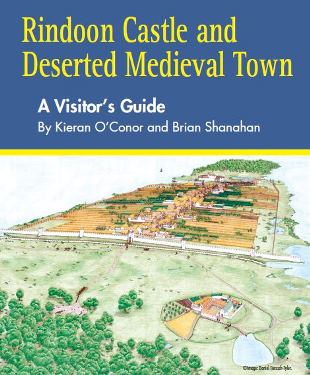 |
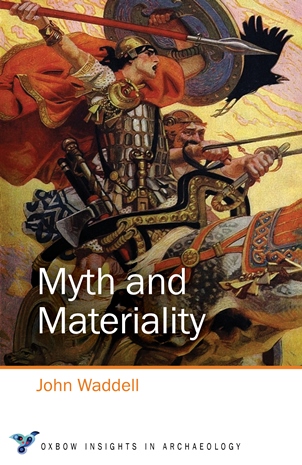 |
|
Congratulations to Dr Kieran O’Conor and Brian Shanahan on the publication of their book Rindoon Castle and Deserted Medieval Town: A Visitor’s Guide (ISBN: 978-0-9575800-7-7), Roscommon County Council, 2018. |
Congratulations also to Professor John Waddell on the publication of his latest book Myth and Materiality (ISBN: 9781785709753), Oxbow Press, Oxford, 2018. |
Rathcroghan: European Innovation Partnership (EIP-Agri) project 1st Phase approved

The Rathcroghan Resource Community (RRC) was formed in 2015. Its committee members consist of key stakeholders in the Rathcroghan archaeological landscape including landowners, Rathcroghan Visitor Centre, Roscommon County Council, and NUI Galway representatives. The RRC is delighted to report that (in collaboration National Monuments Service, Department of Culture, Heritage and the Gaeltacht, and Teagasc) it has been successful in its application to the Department of Agriculture European Innovation Partnership for its project proposal entitled ‘Sustainable Farming in the Rathcroghan Archaeological Landscape’. This project will now progress to the second phase and involve the creation of a detailed project plan to secure access to a 5-year funding cycle. This grant will enable the Rathcroghan farmers to better achieve a livelihood out of this sensitive farming landscape while simultaneously conserving the environmental integrity of this valuable cultural asset and ensuring the maintenance and integrity of this unique archaeological complex for future generations.
MA in Landscape Archaeology graduates 2017

The sun shone brightly on our equally dazzling MA in Landscape Archaeology class of 2017 for their graduataion ceremony on Thursday 23 November 2017. Pictured here with beaming smiles are Margaux Chevalley MA, Diane Morrison MA, Kylie Crowder MA and Matt Peace MA, with Dr Stefan Bergh and Dr Kieran O'Conor.
Professor Christopher Barton, visiting US Fulbright Scholar
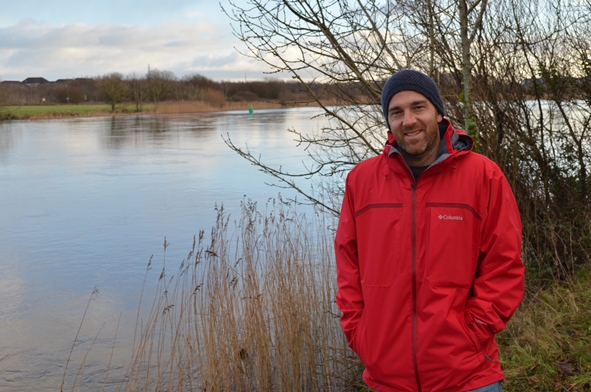
The School of Geography and Archaeology is delighted to welcome Professor Christopher P. Barton PhD, a visiting US Fulbright Scholar from Francis Marion University in South Carolina. He is interested in the archaeology of Irish racialisation during the Irish Diaspora and Great Famine. Professor Barton’s work focuses on the confluence of race and class as intertwined social structures that were used to marginalize the rural Irish. Additionally, he is in the early stages of developing a community-based archaeological project that focuses on resistance, improvisation, and identity on the Great Blasket Island, County Kerry.
Prizes Awarded for Outstanding Archaeological Scholarship 2016/17
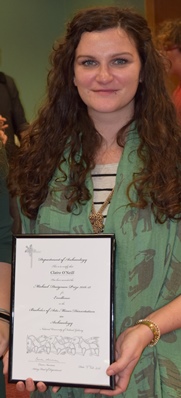 |
 |
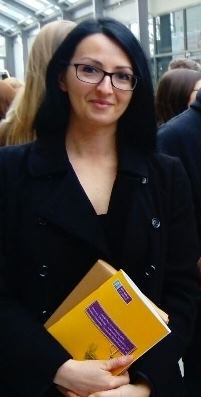 |
|
Congratulations to Claire O’Neill, |
Kylie Crowder, awarded the John Waddell Prize for best MA in Landscape Archaeology dissertation and |
Livia Barnova, |
Appointment of Adjunct Professor Mary Cahill
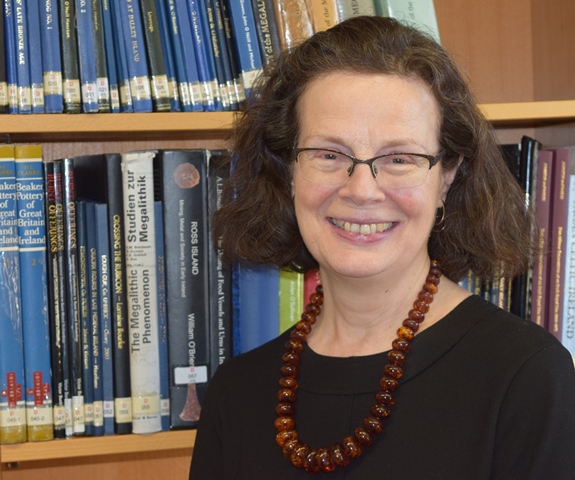
We are delighted to announce the appointment of Adjunct Professor Mary Cahill.
A specialist in the archaeology of the Bronze Age, Professor Mary Cahill comes to NUI Galway from the National Museum of Ireland where she was Keeper of Antiquities. She has lectured and published widely, particularly on the Bronze Age. She is a leading expert on prehistoric gold.
A Fellow of the Society of Antiquaries (London), Professor Cahill has served on the Royal Irish Academy's National Committee for Archaeology, the board of the Discovery Programme, the Heritage Council's Statutory Committee for Archaeology, and was vice-president of the Council of the Royal Society of Antiquaries of Ireland.
Professor Cahill’s current research focus has turned towards ethnography, the symbolism and agency of gold ornaments, and sheet gold in the context of warrior status and culture in later prehistoric Europe.








